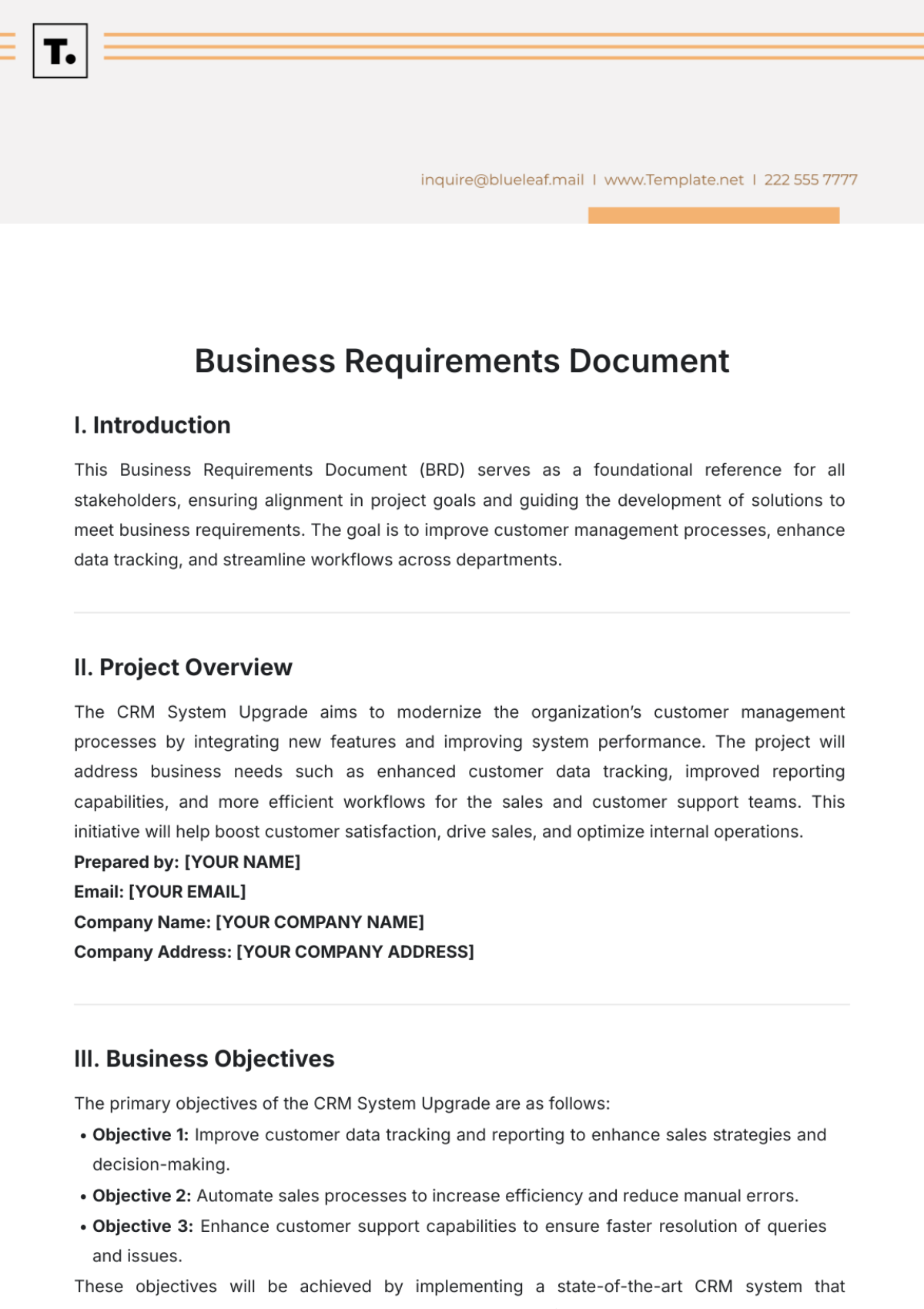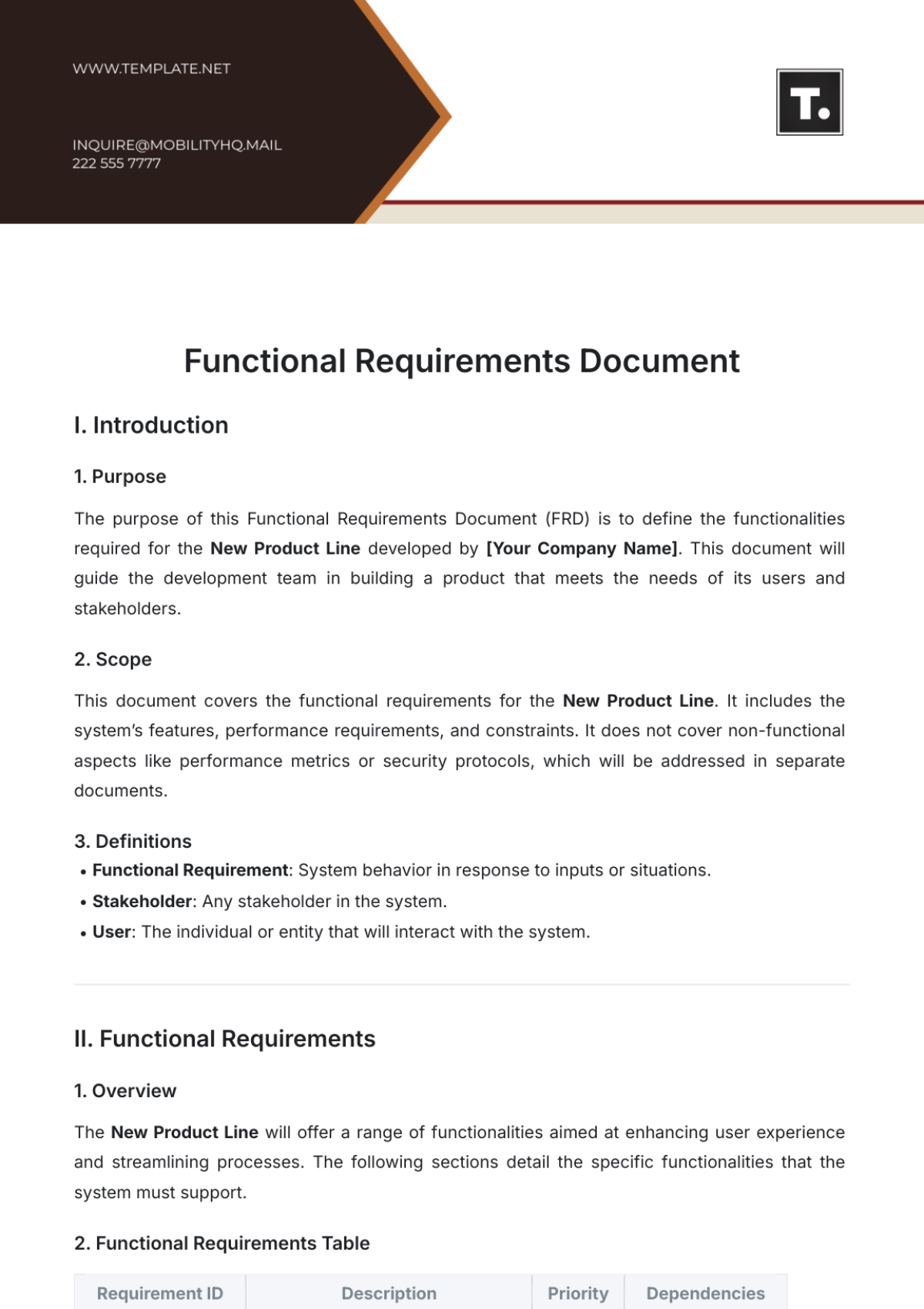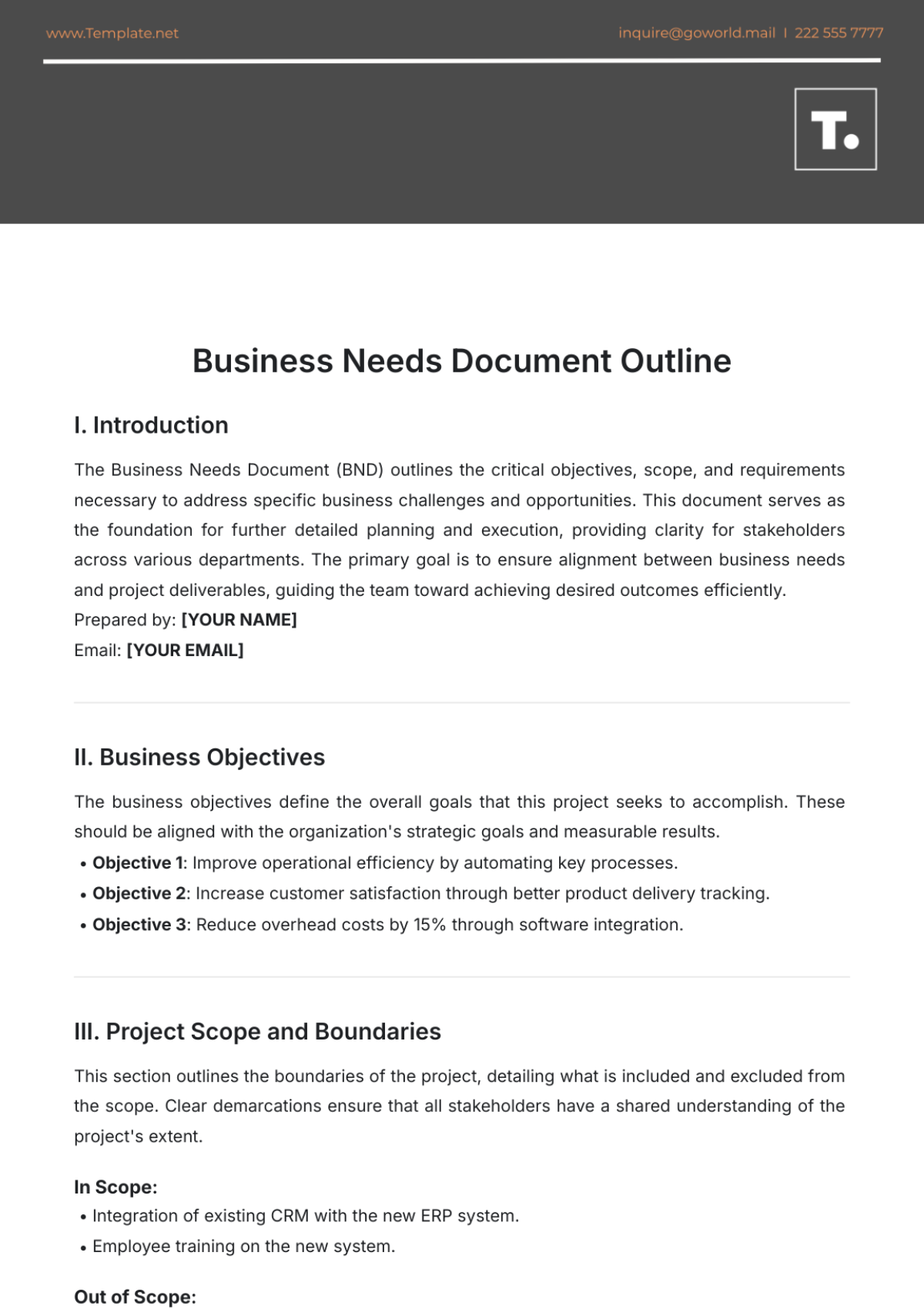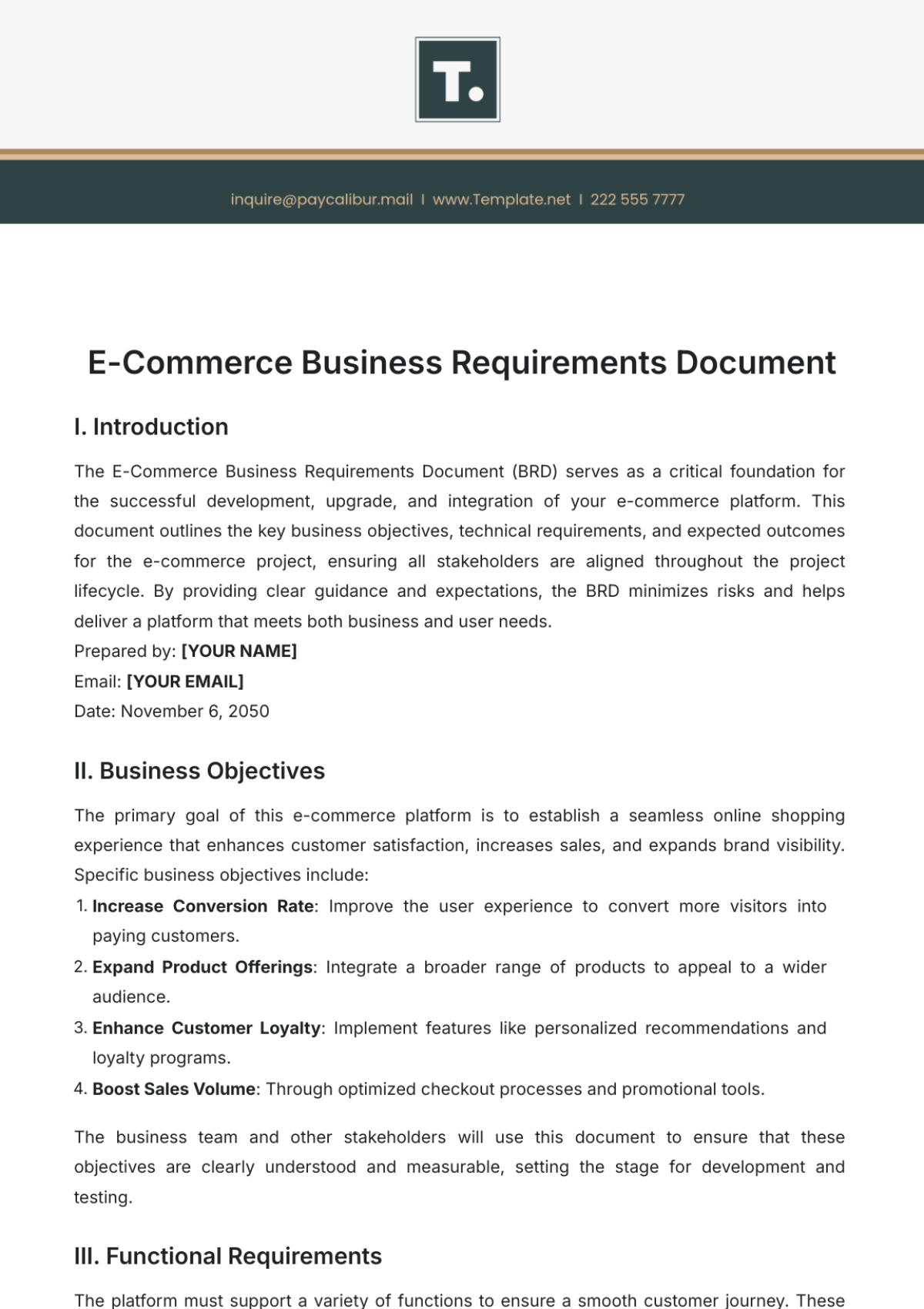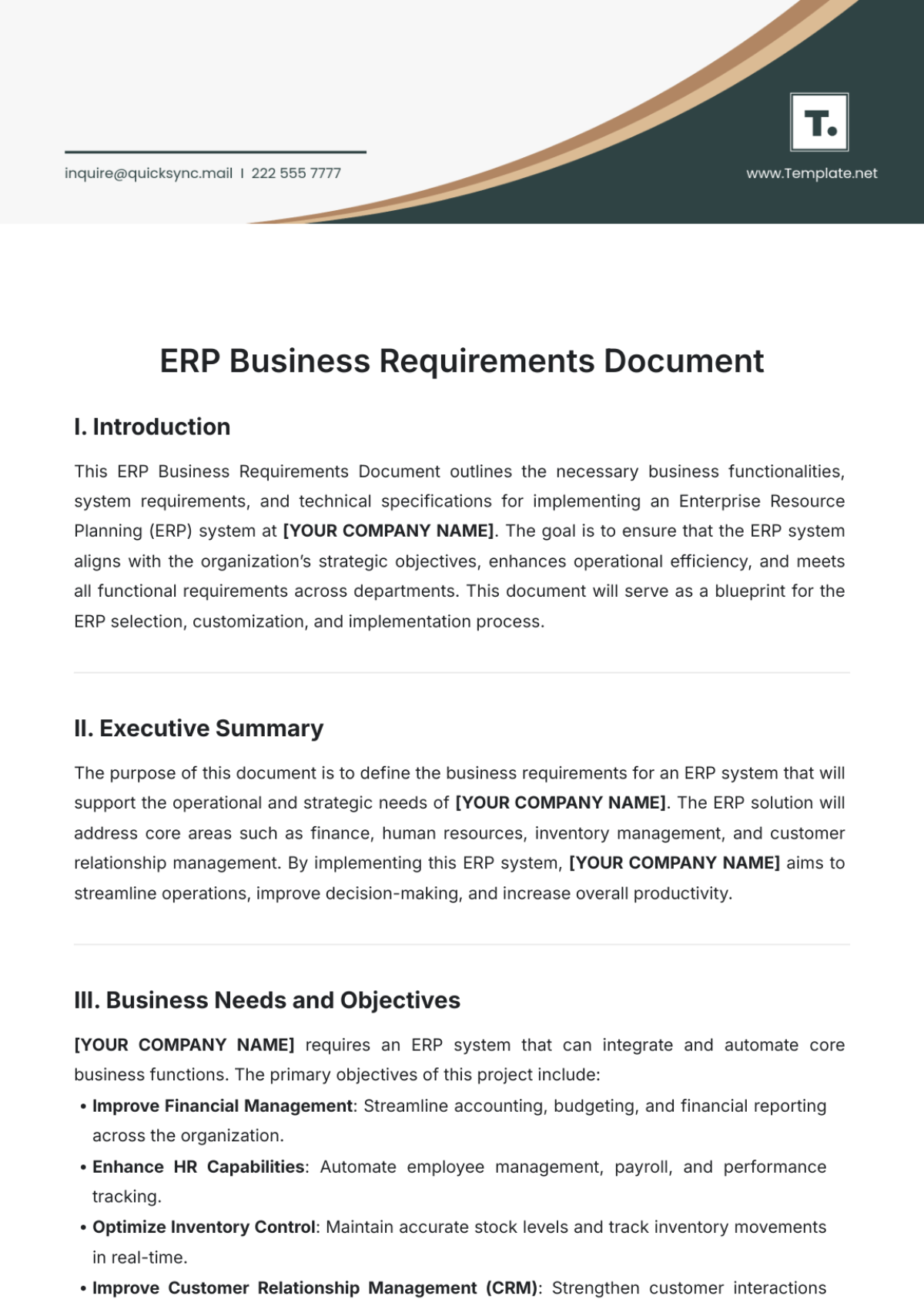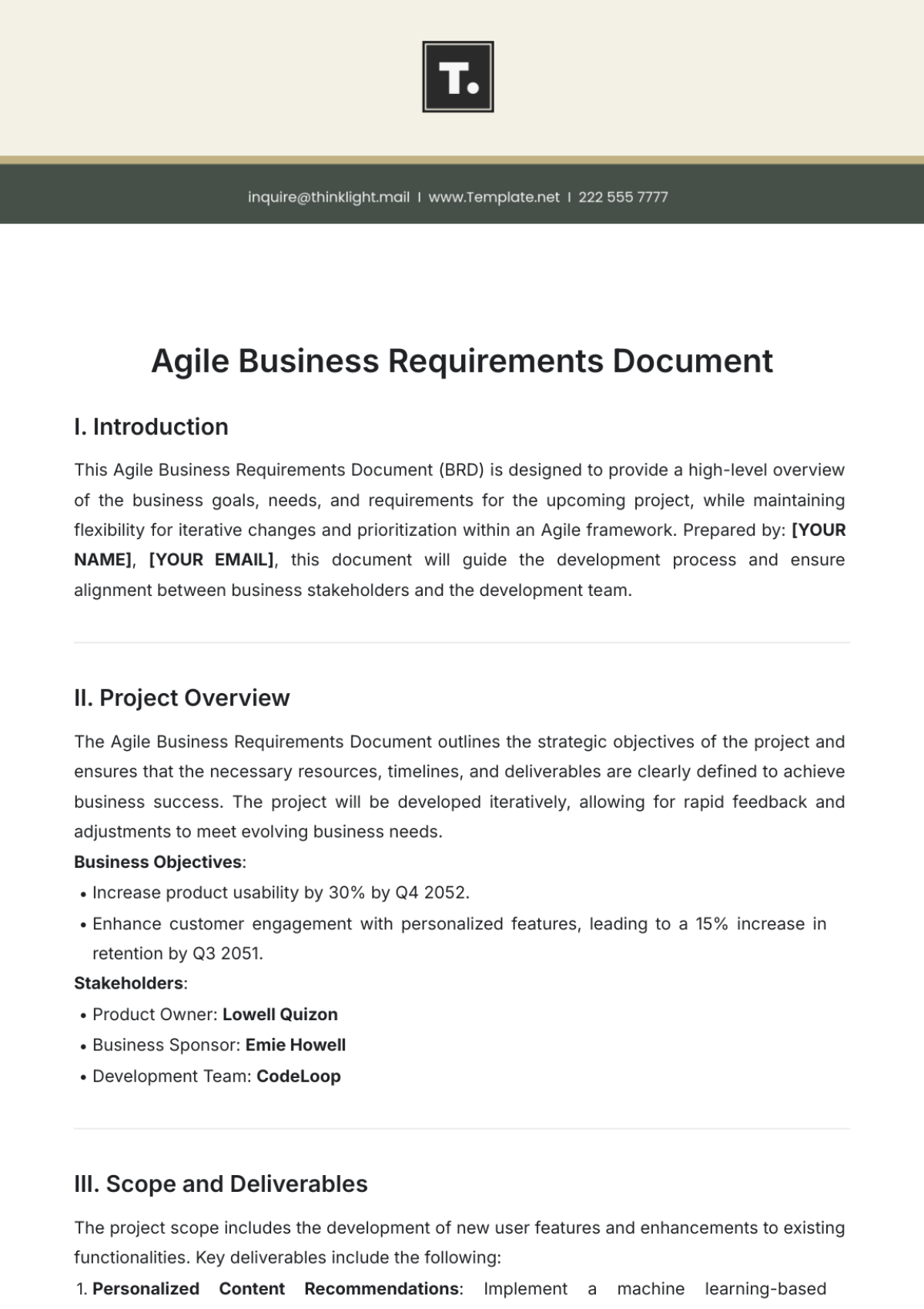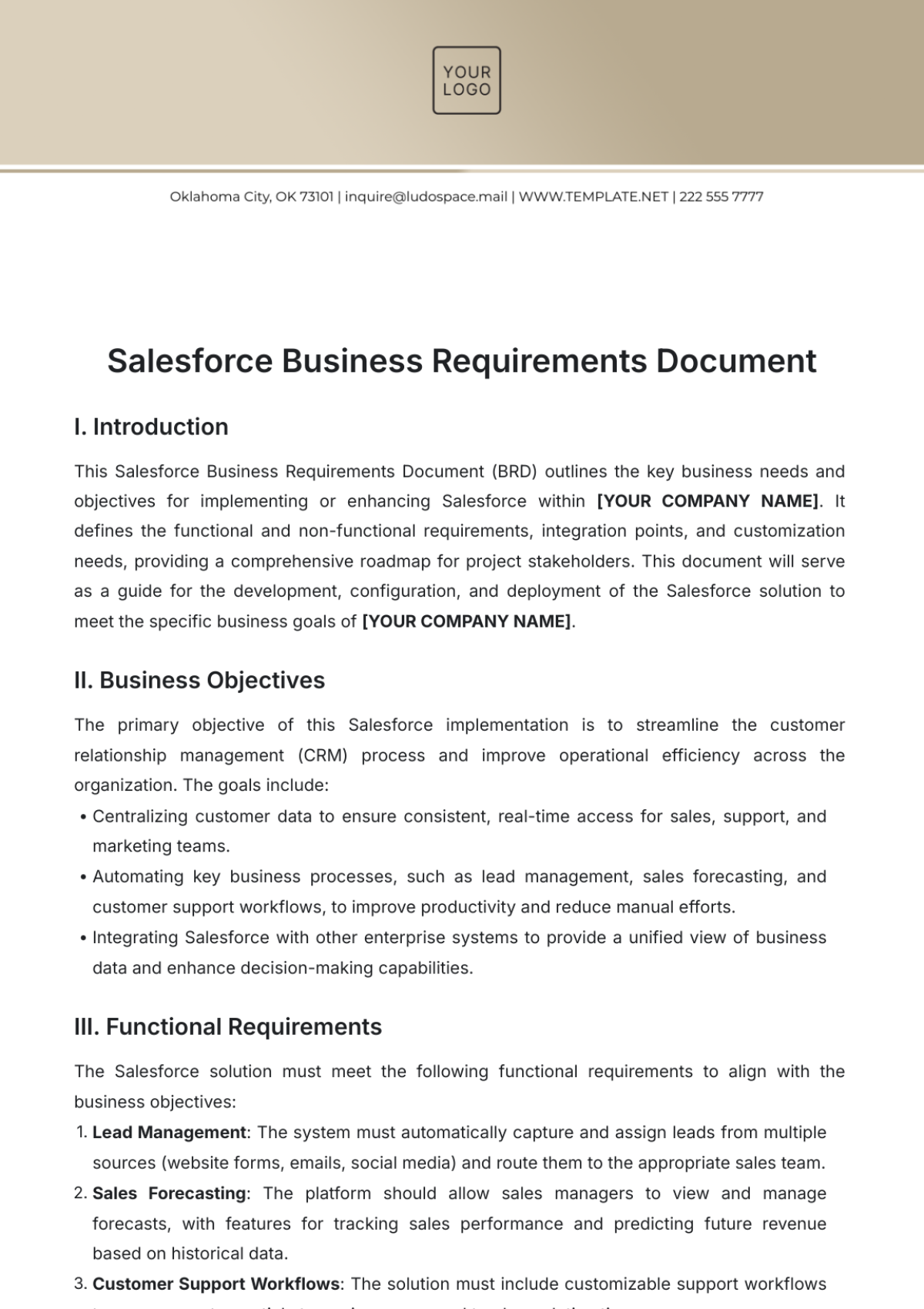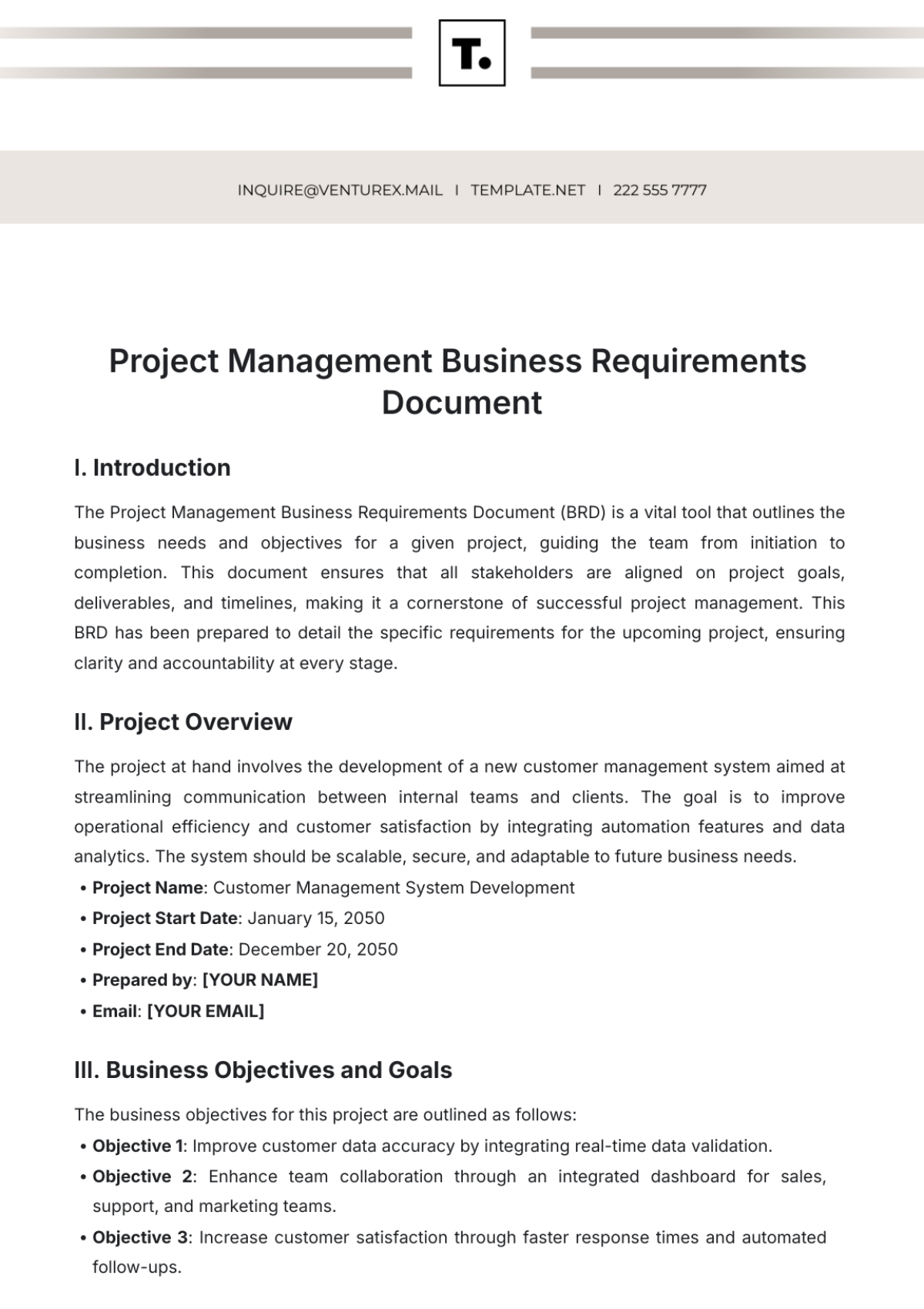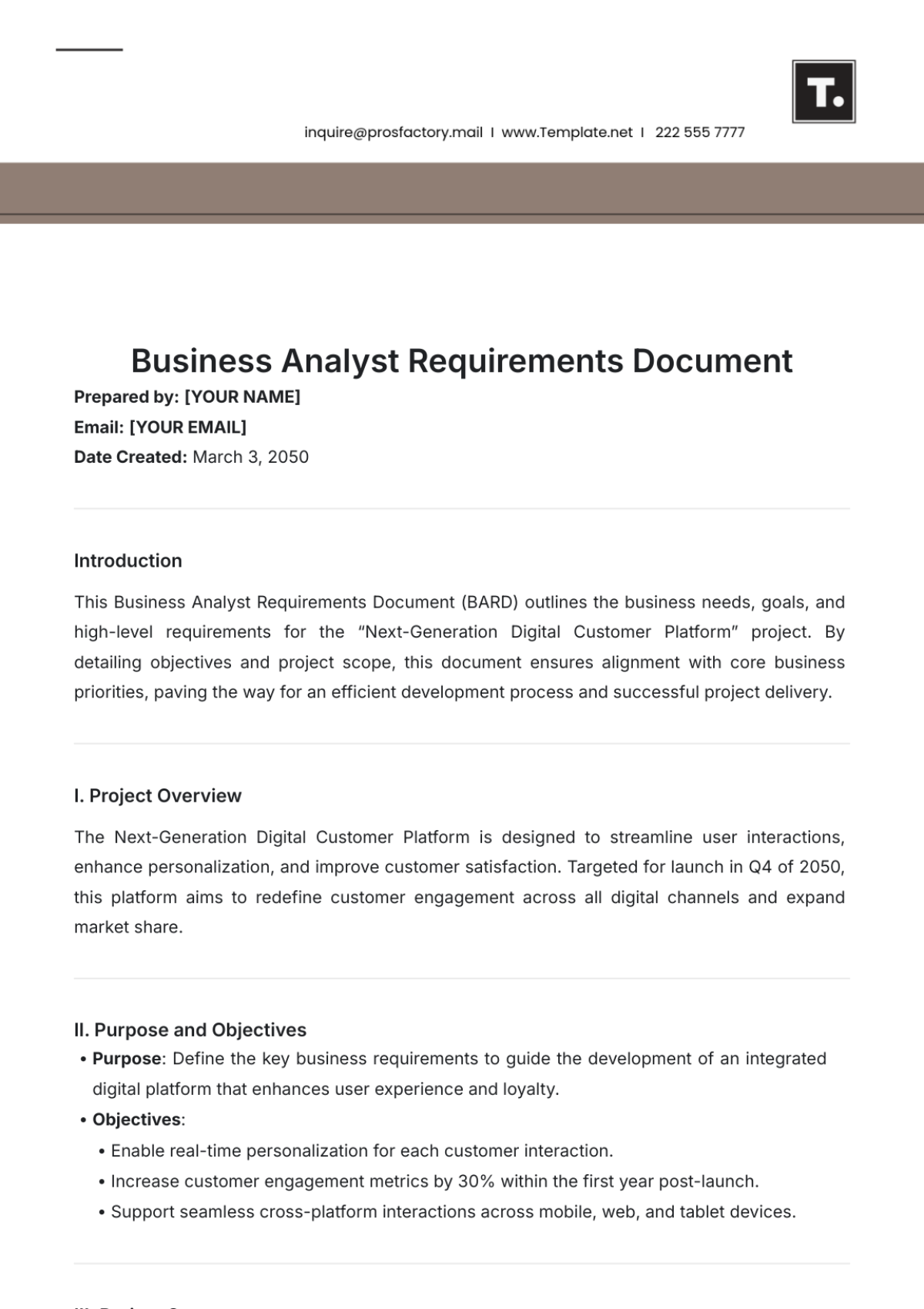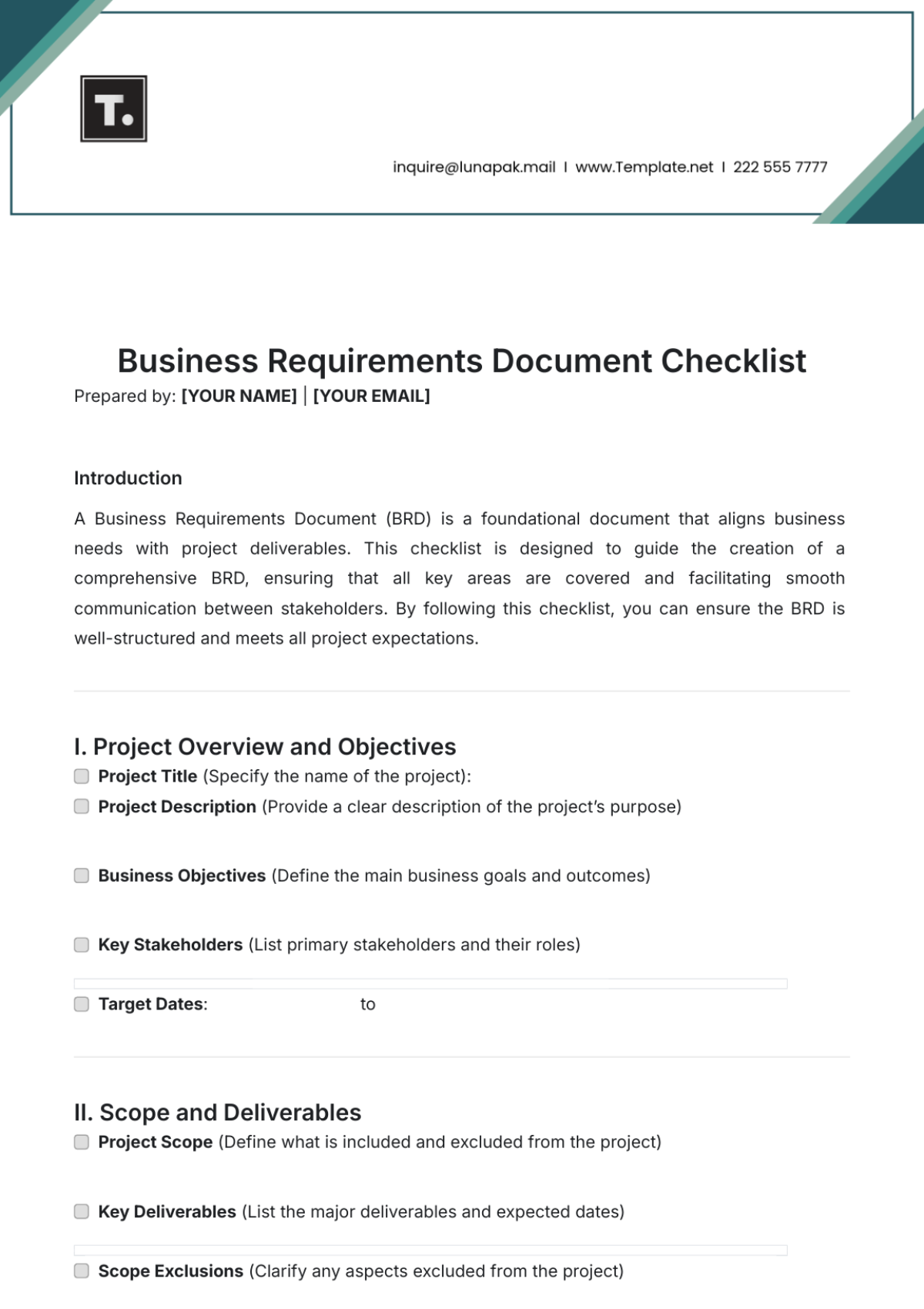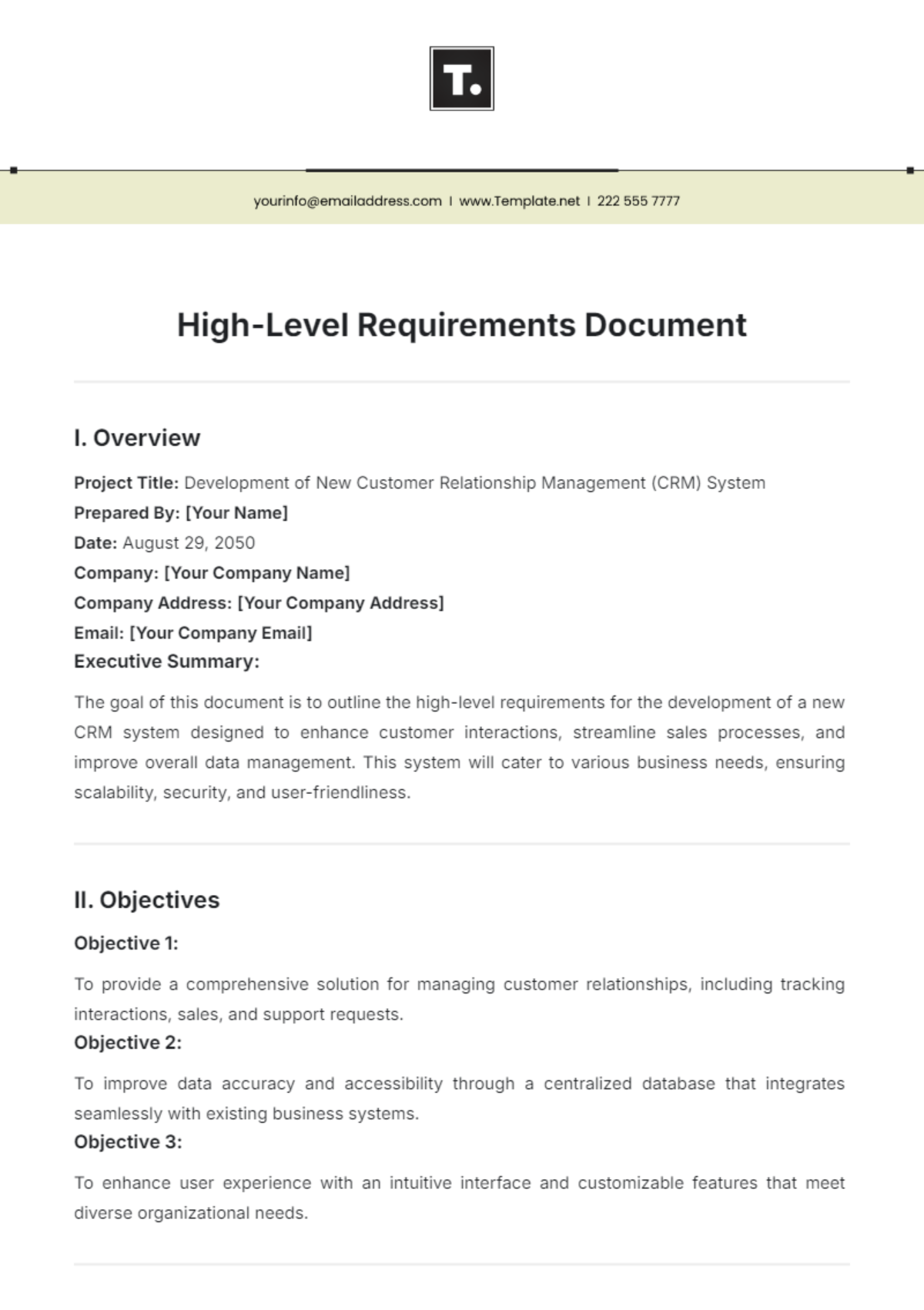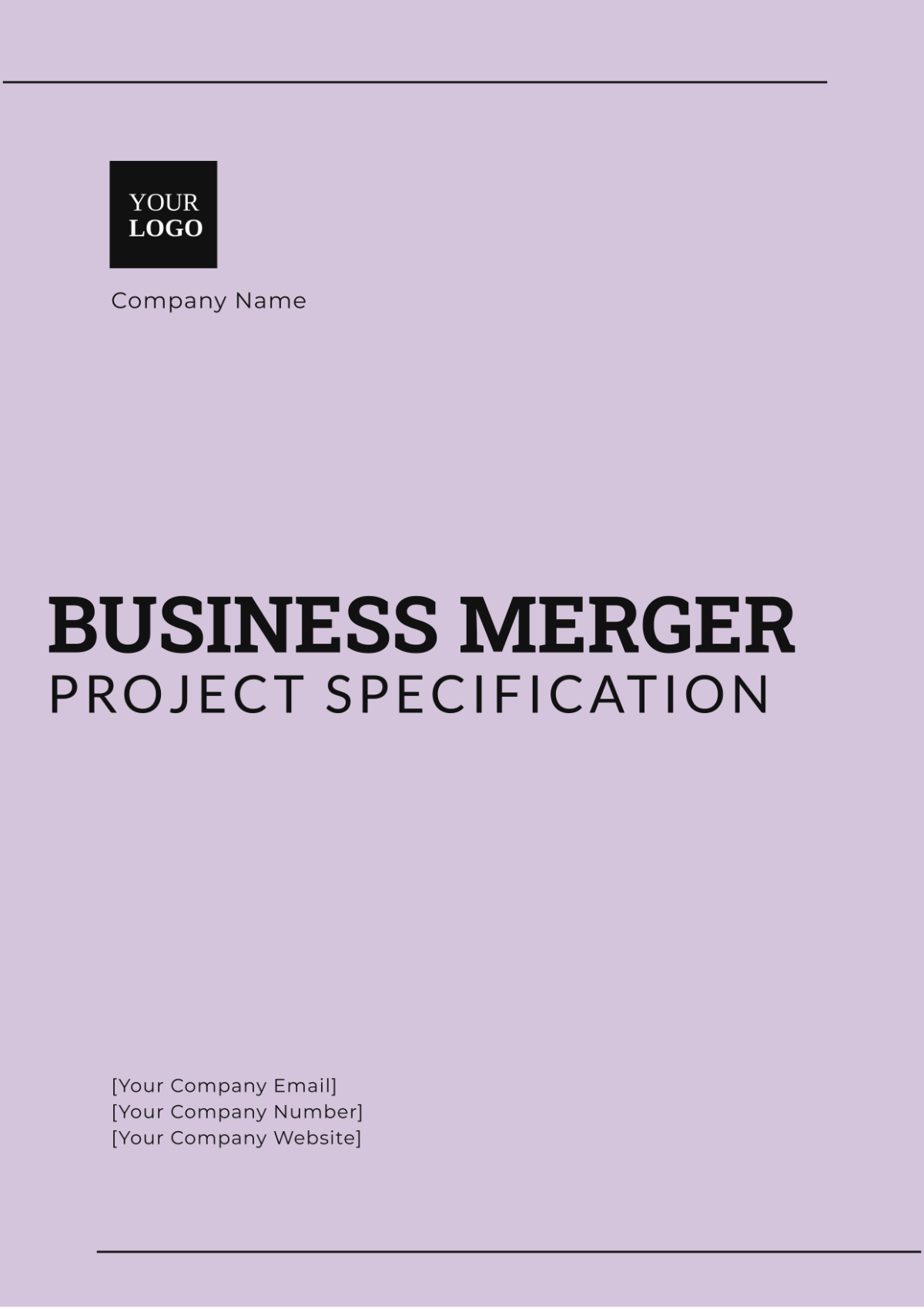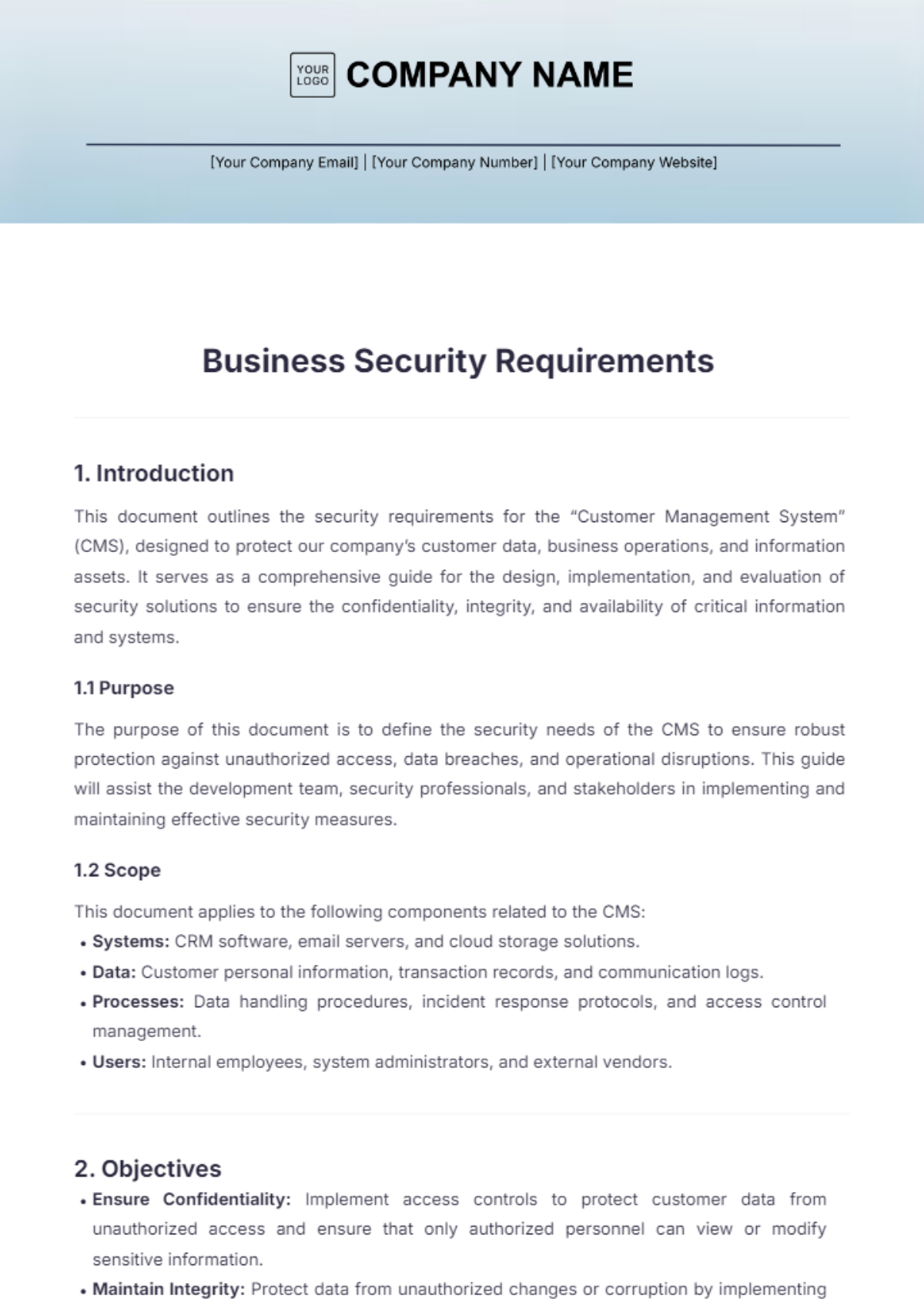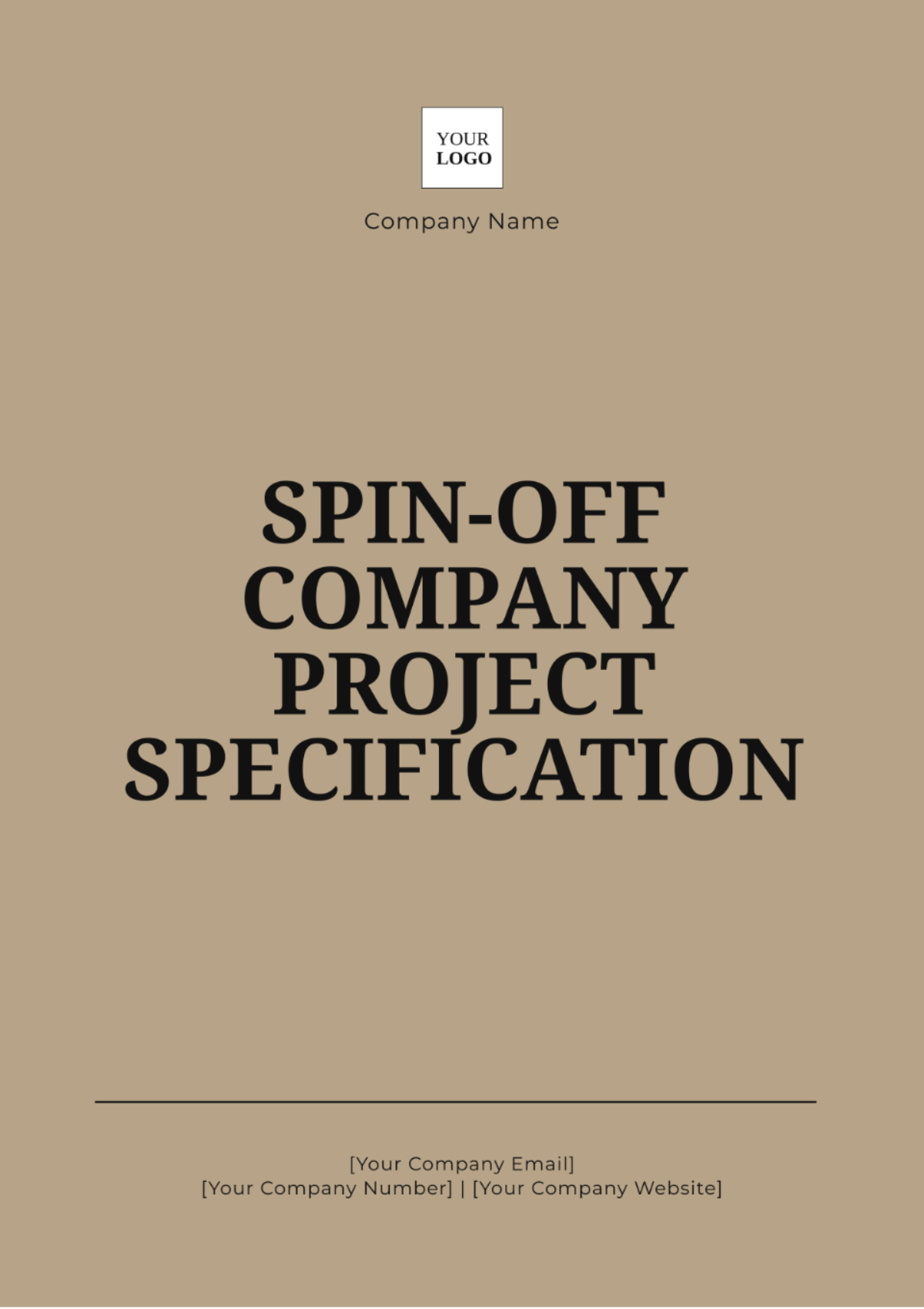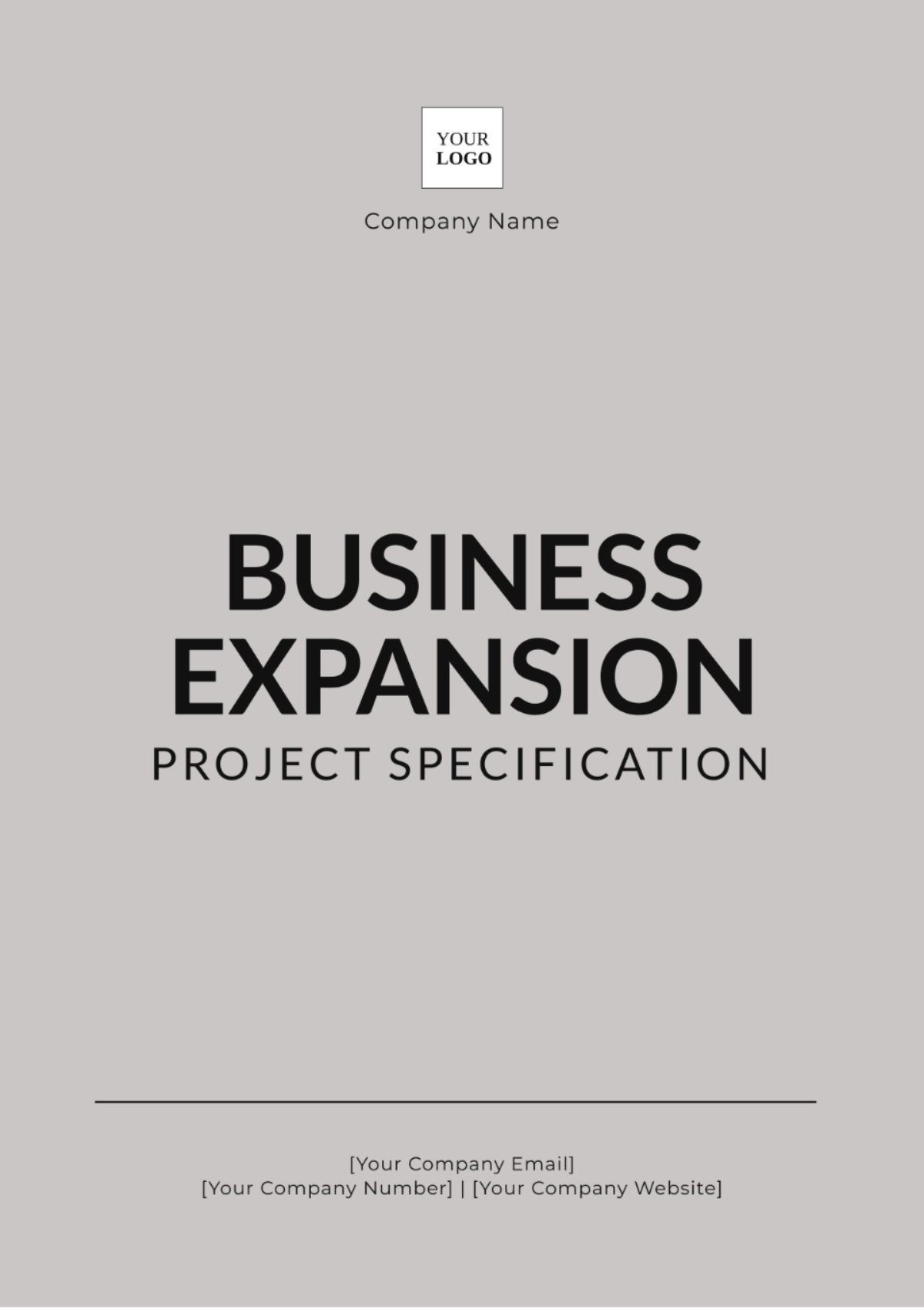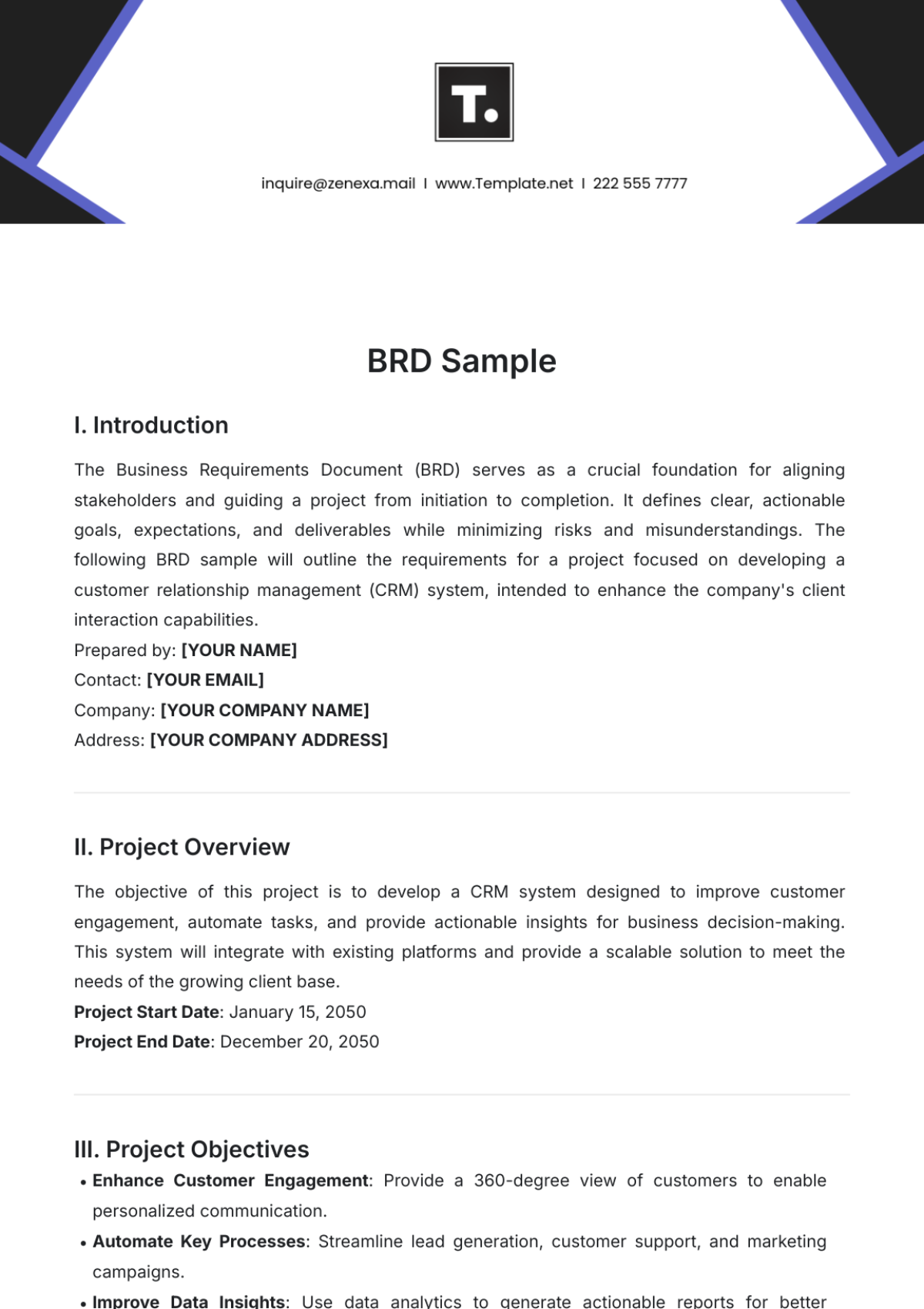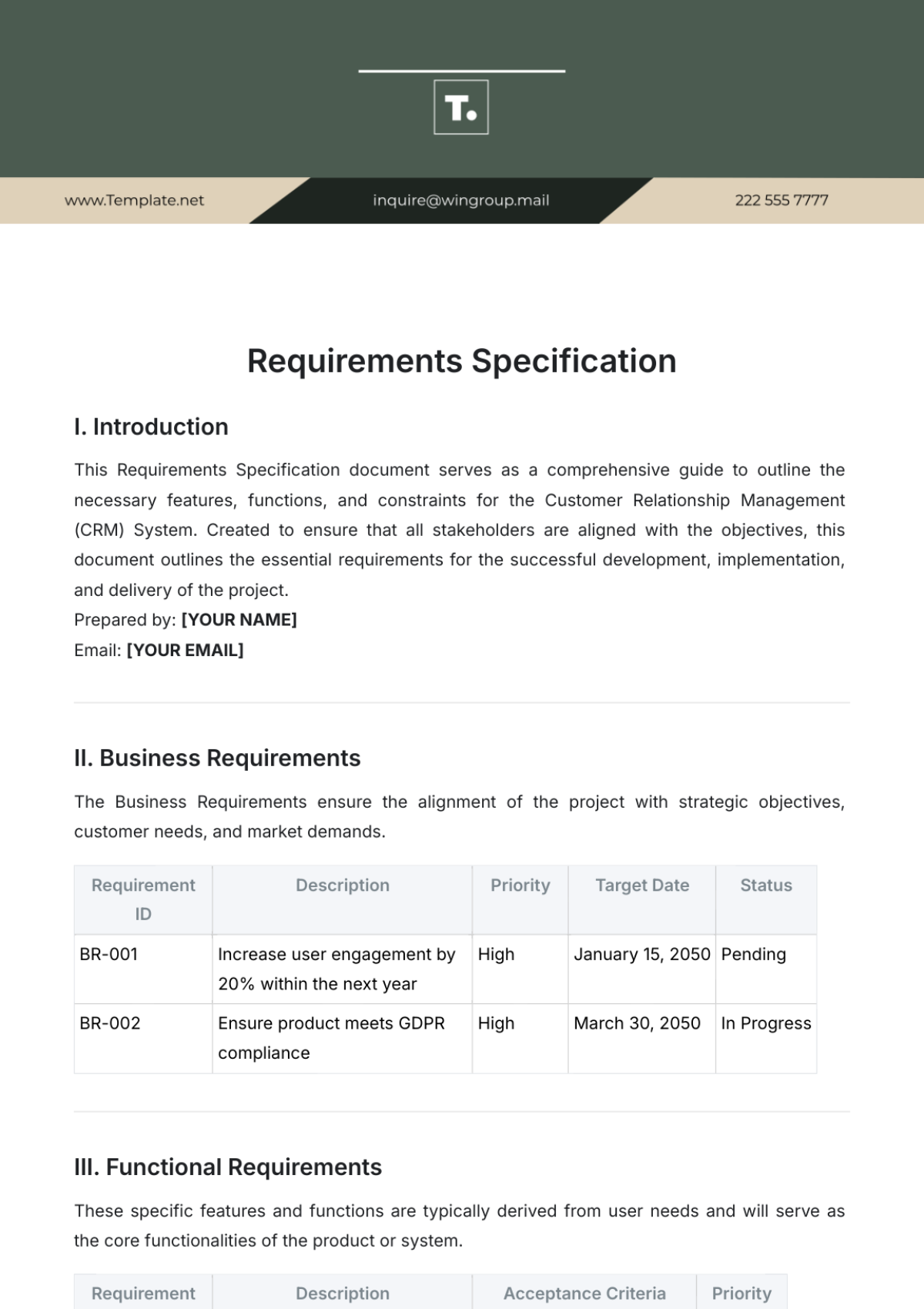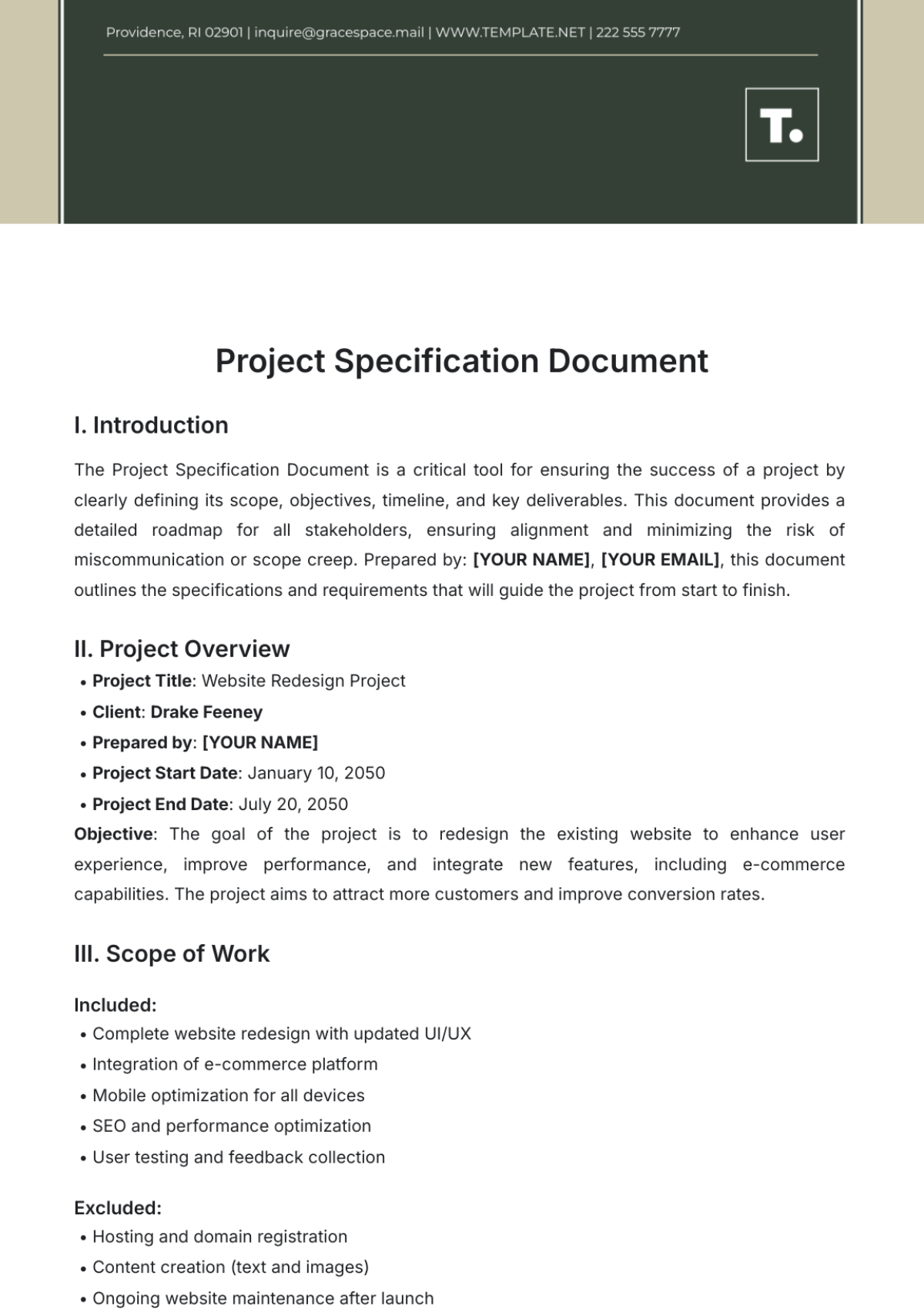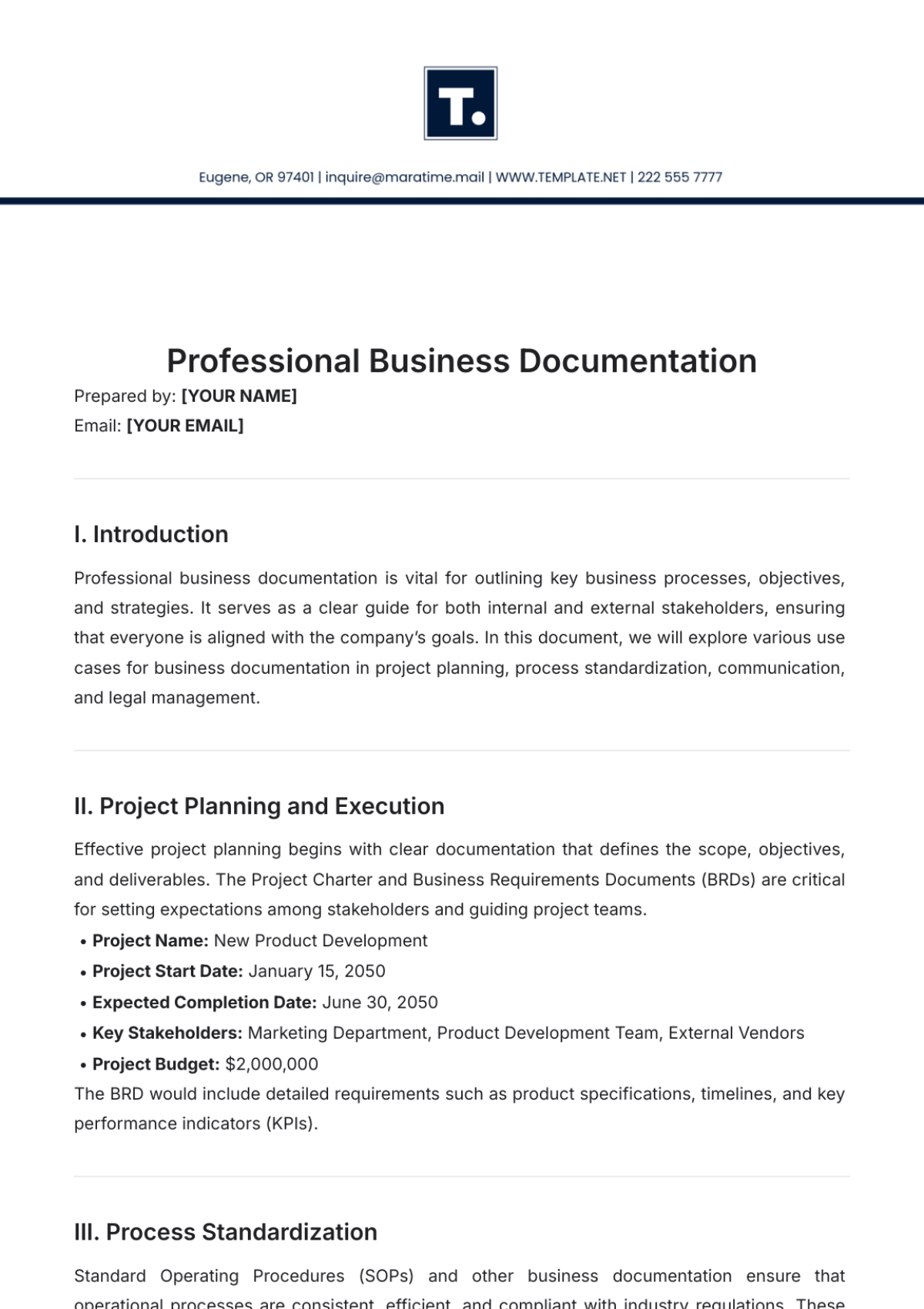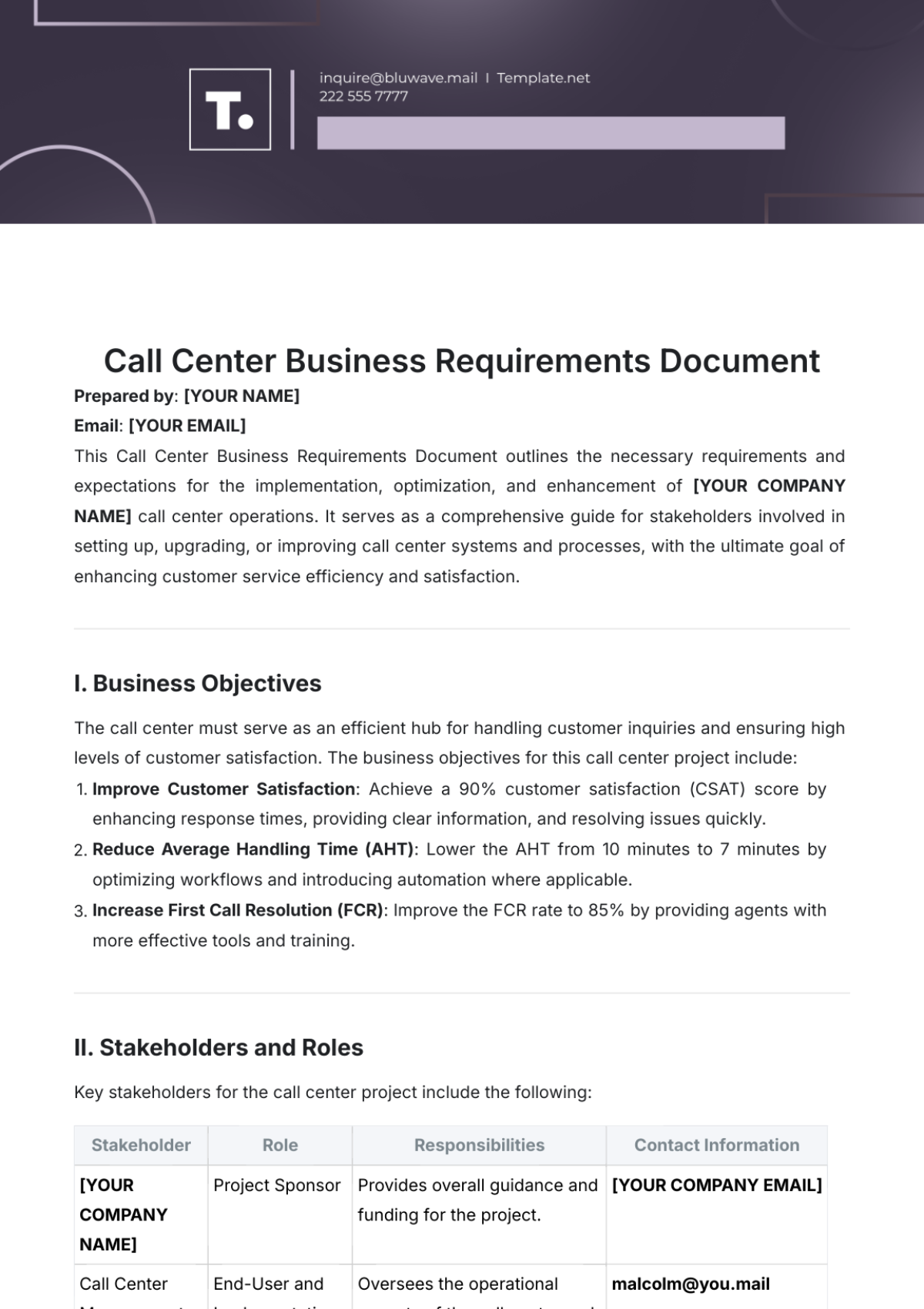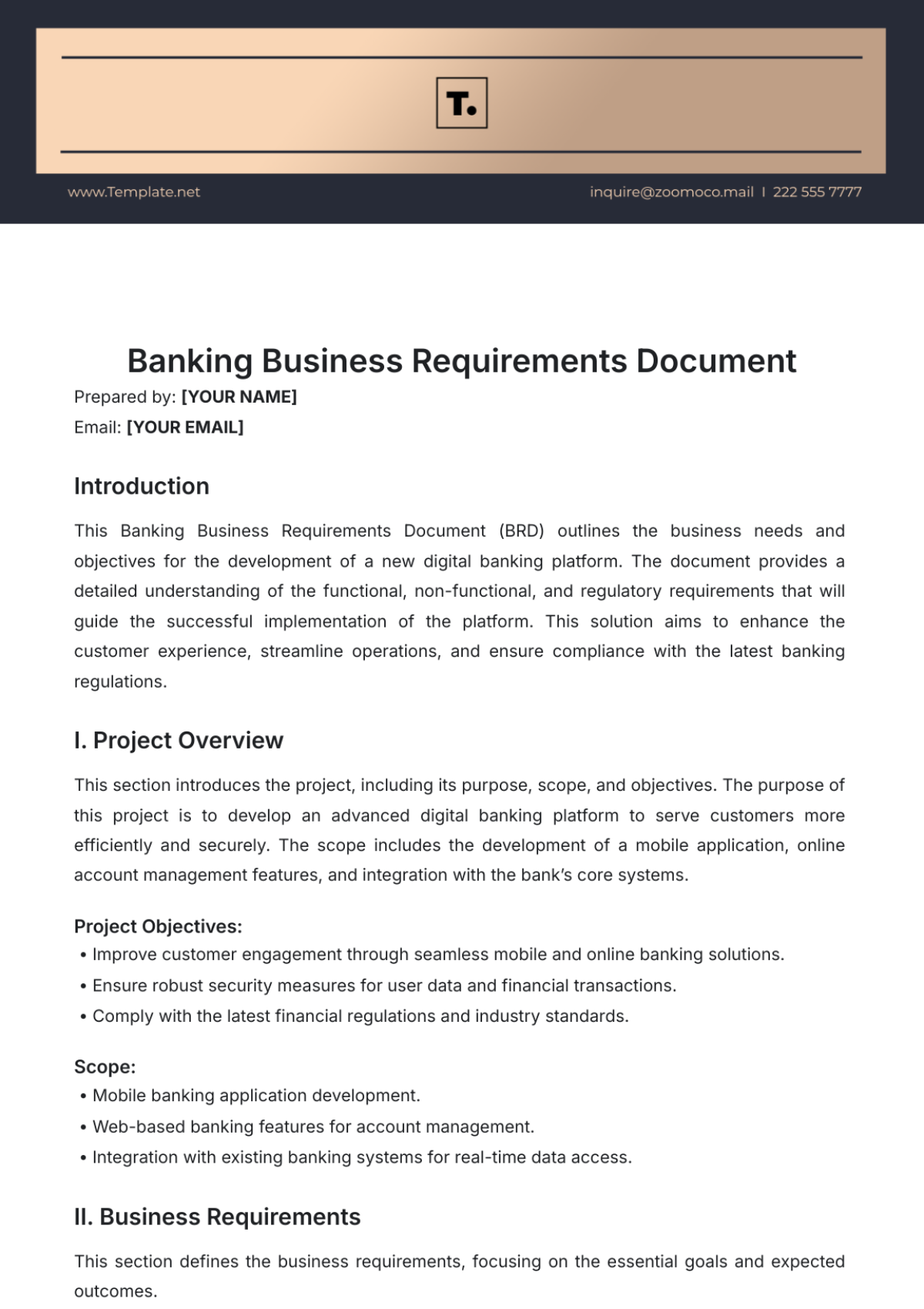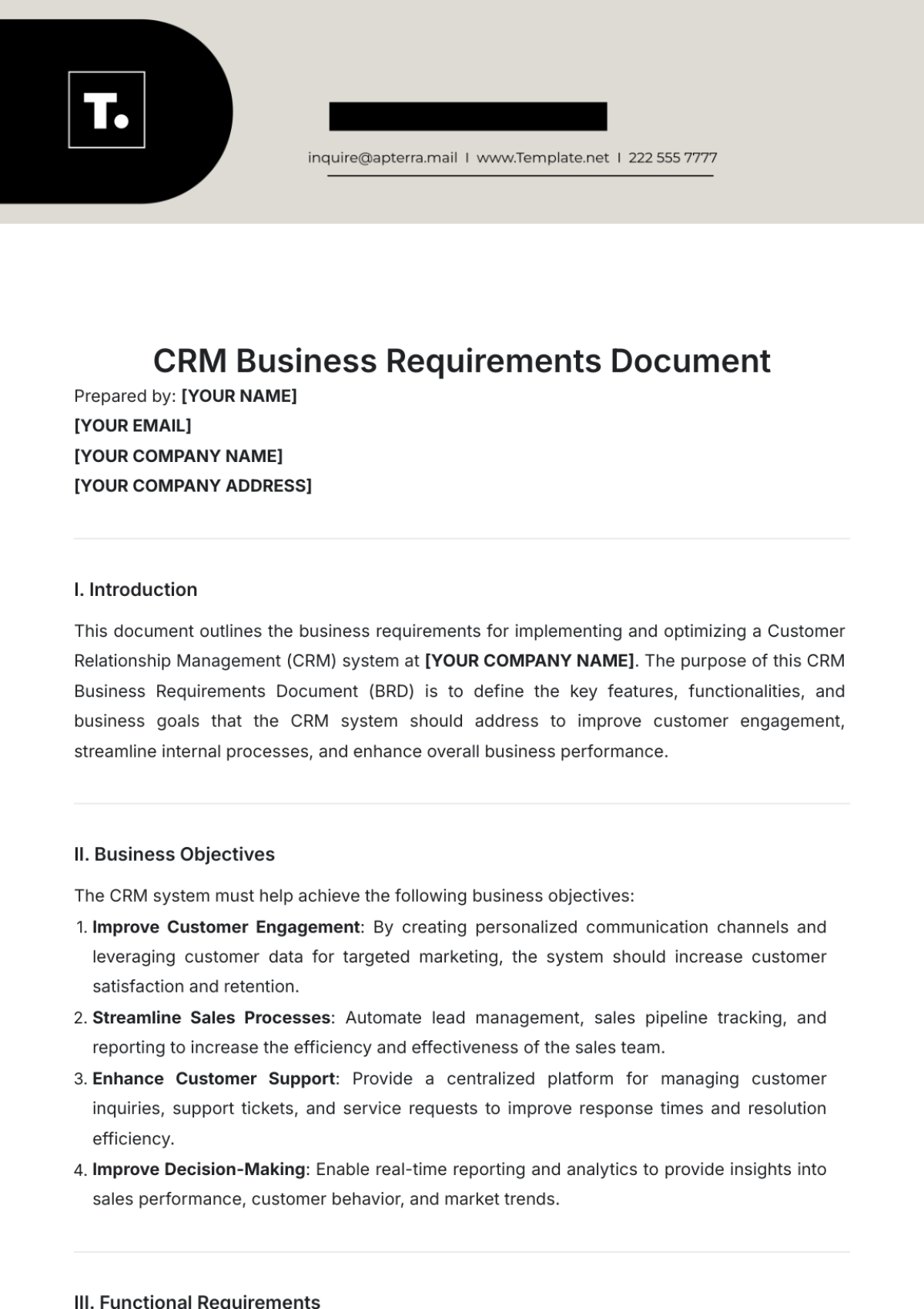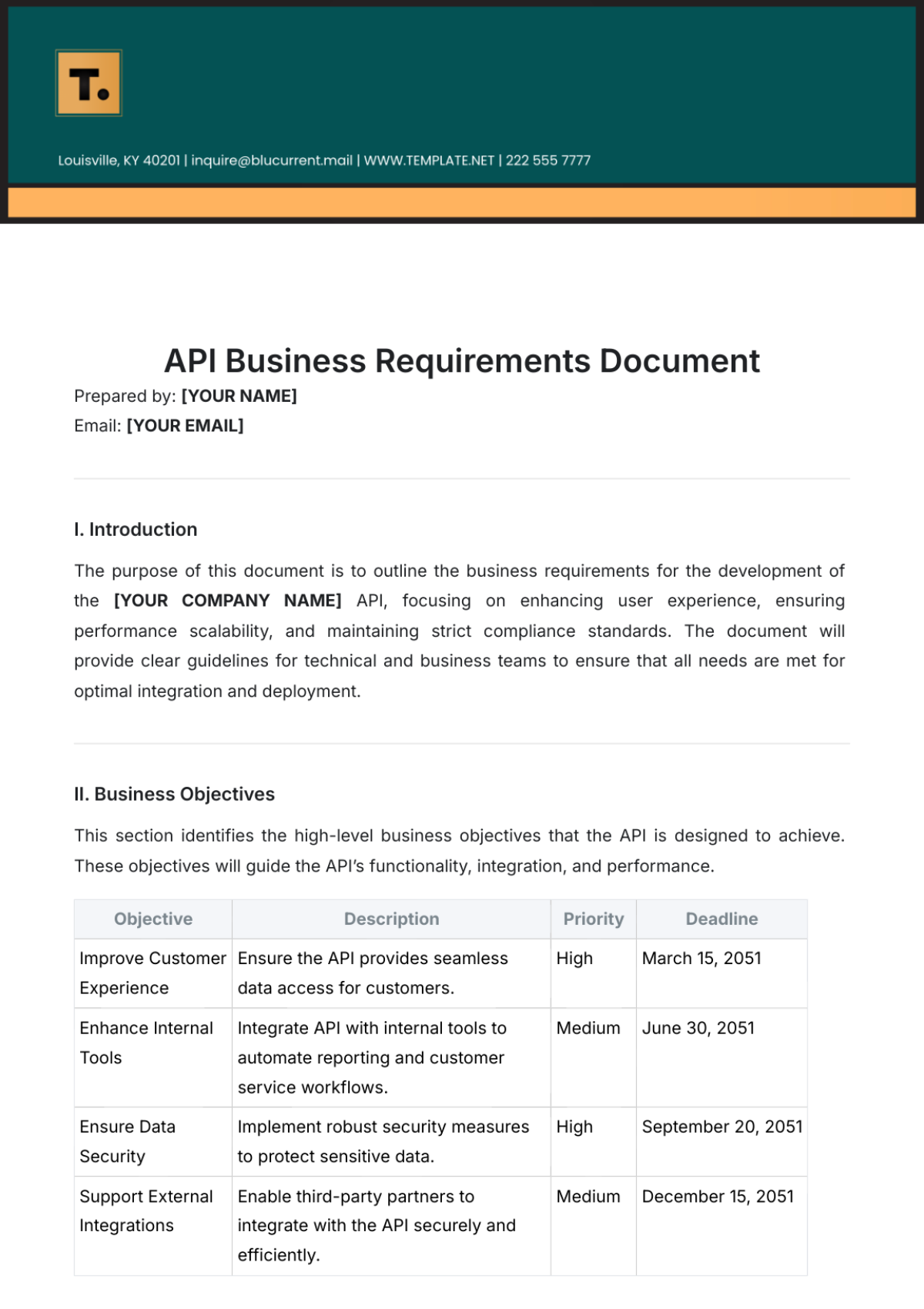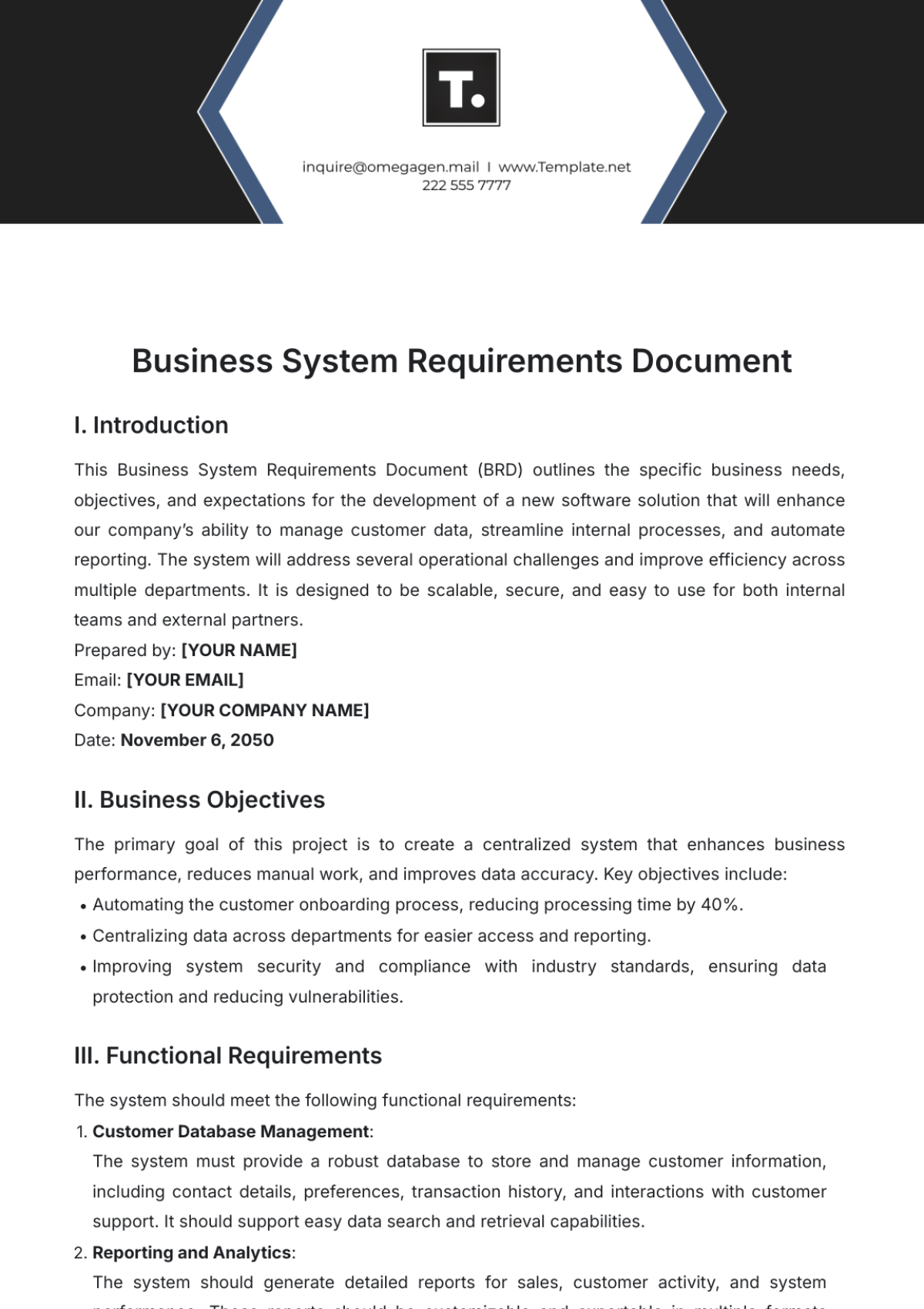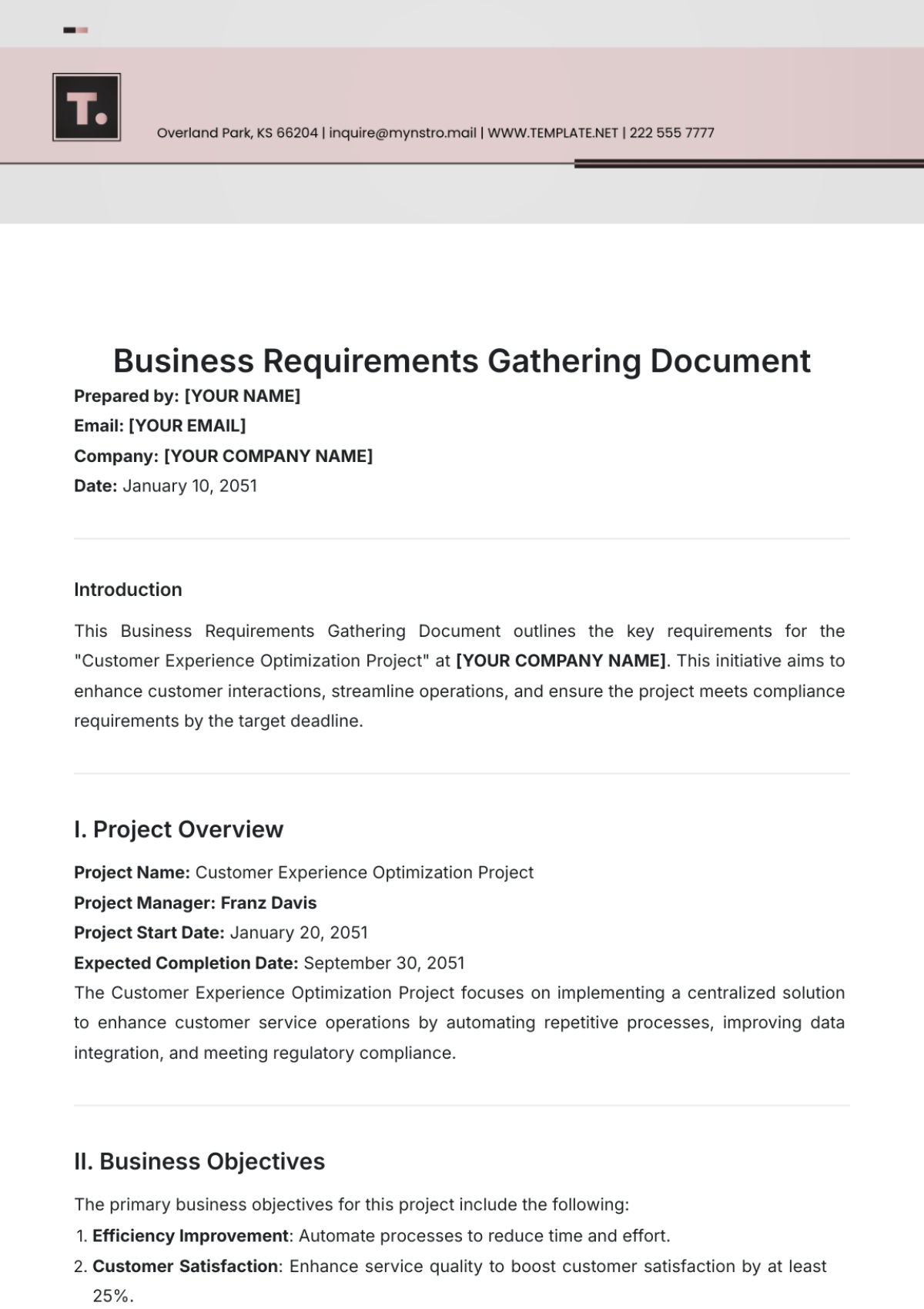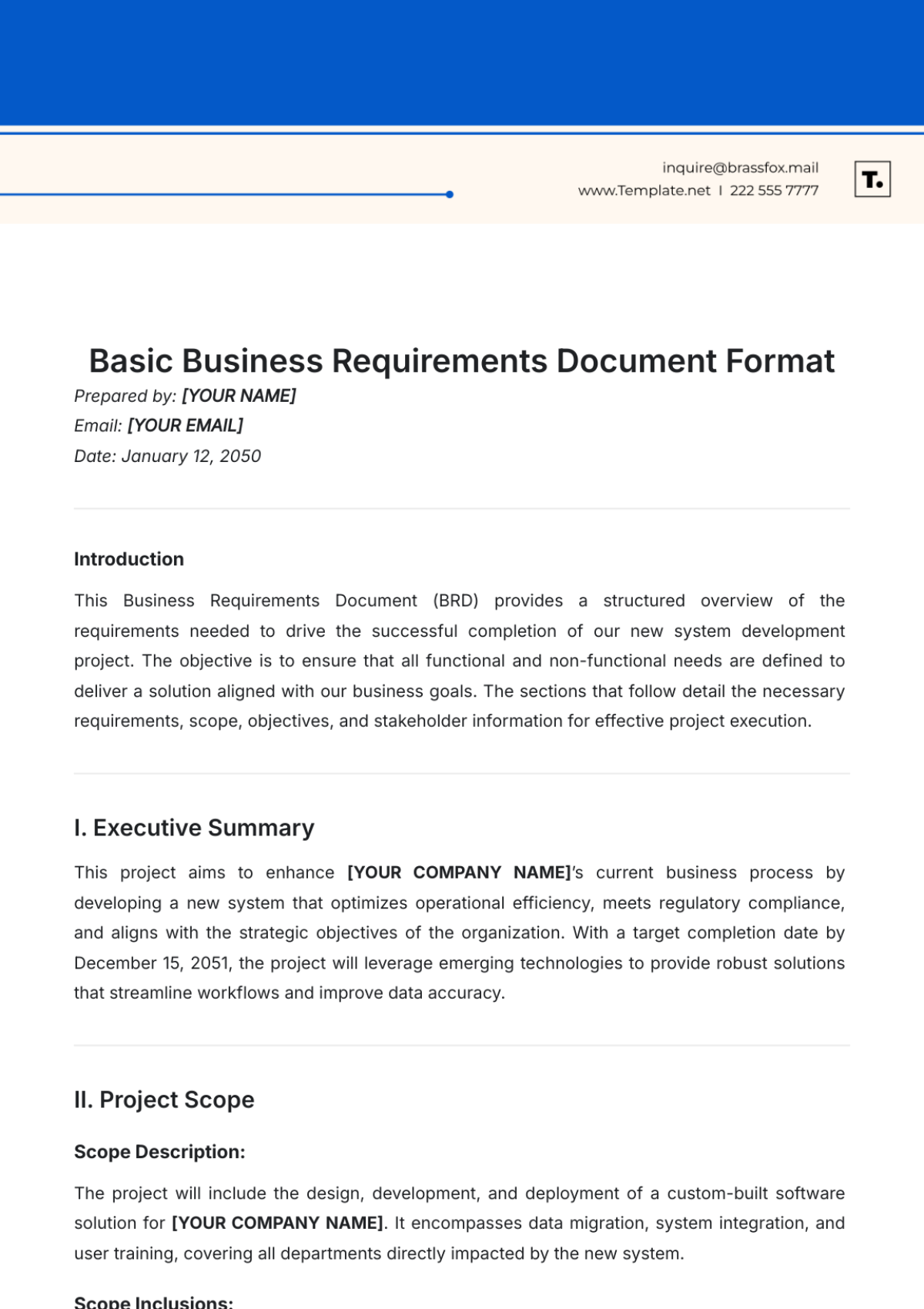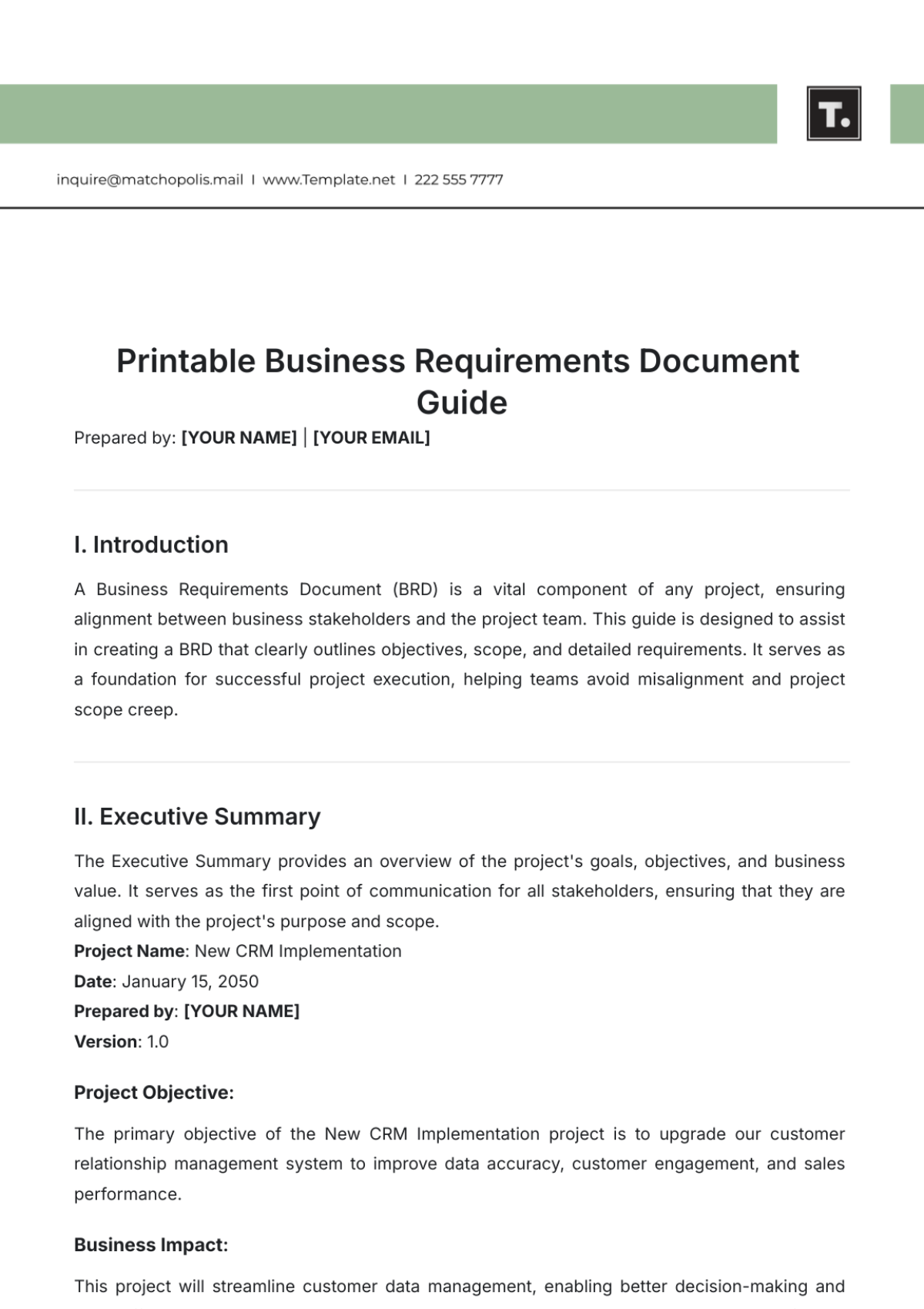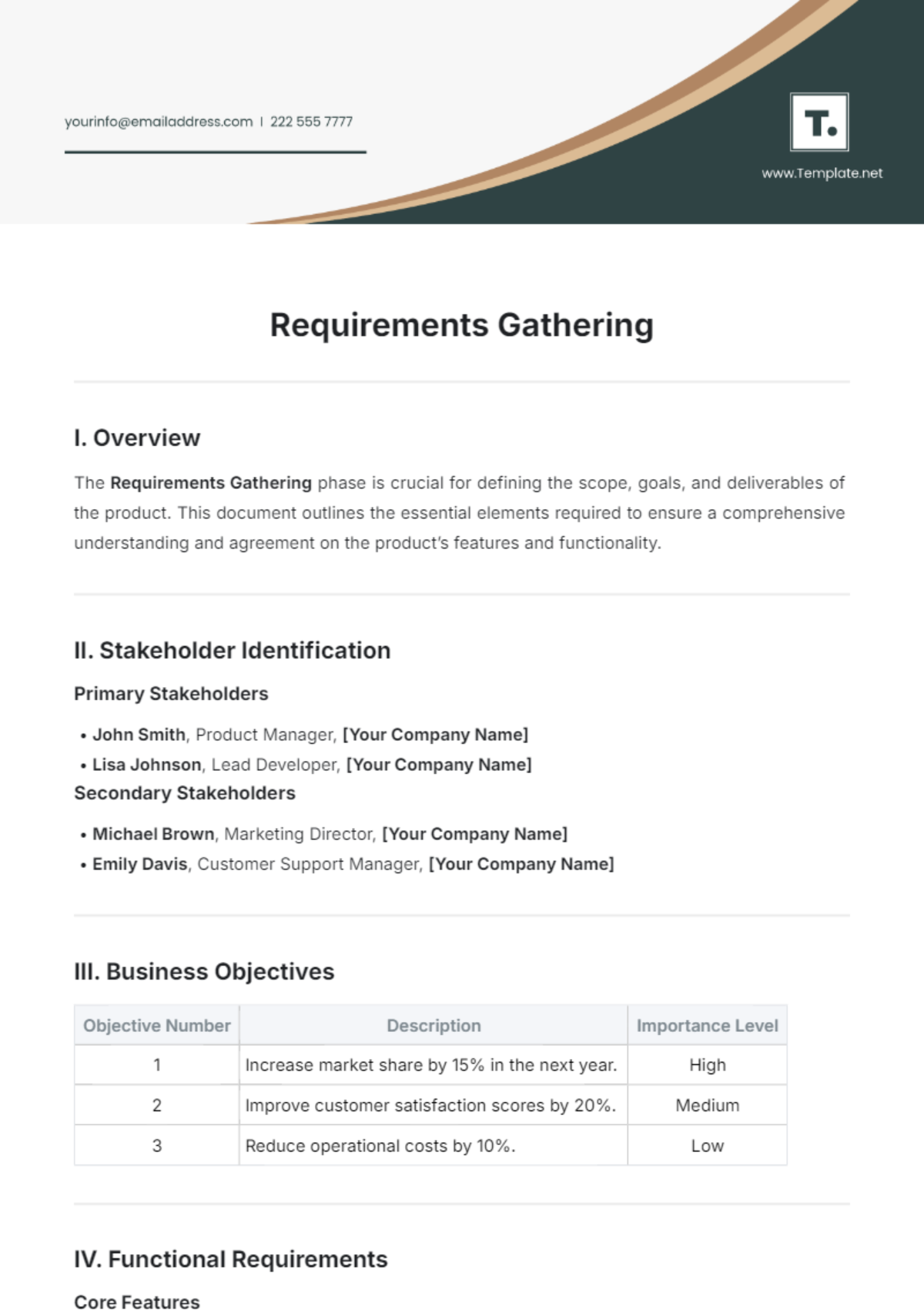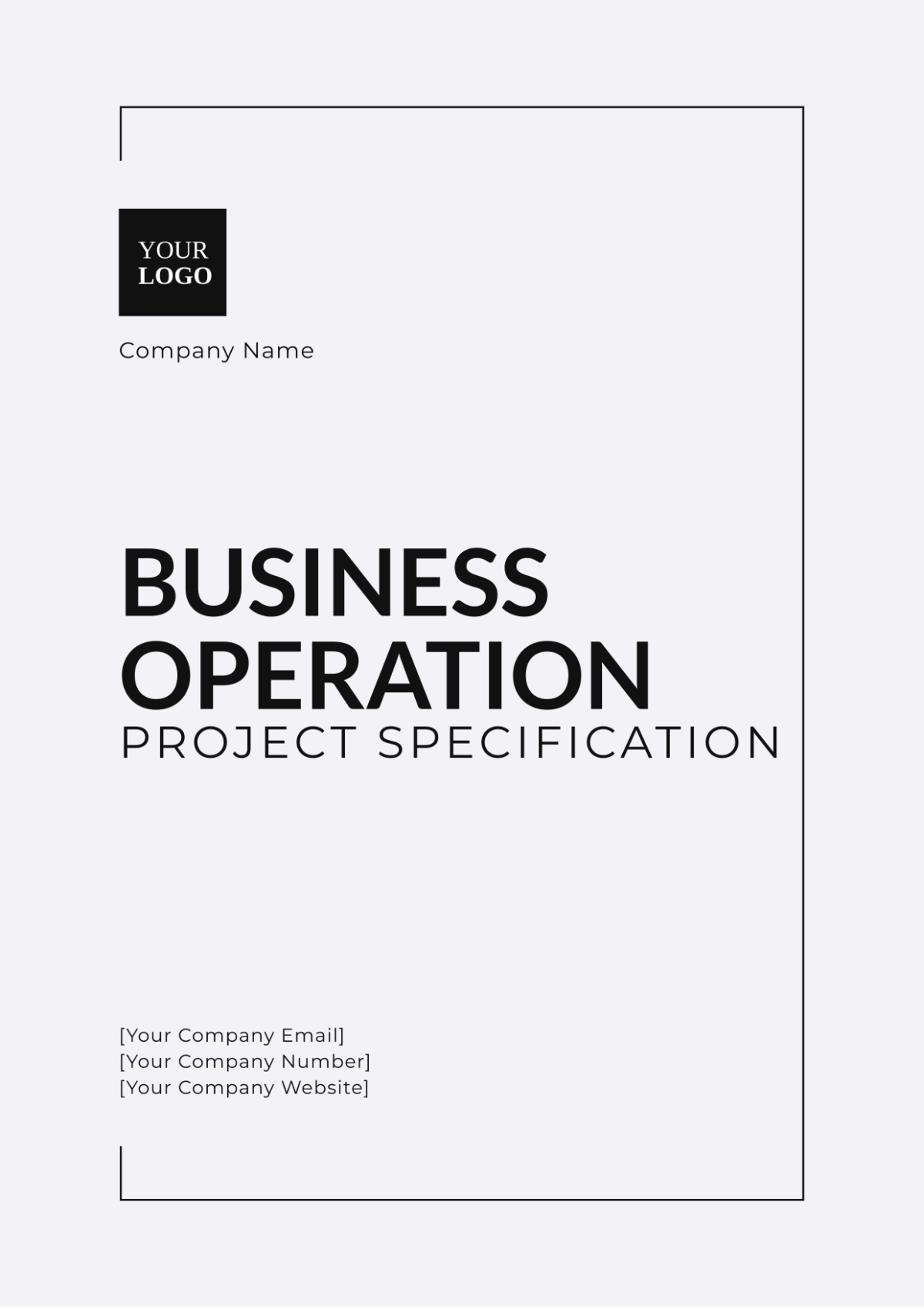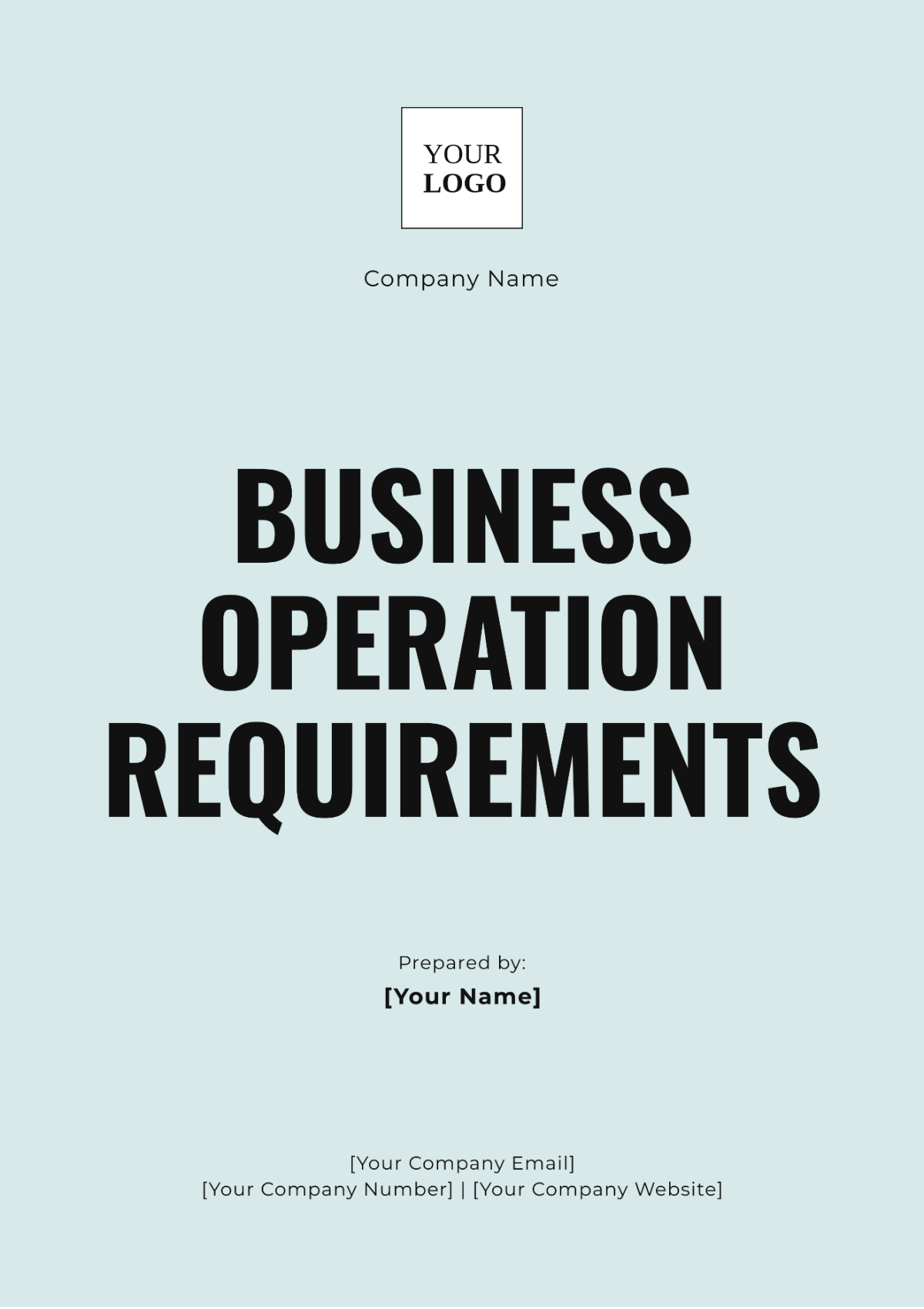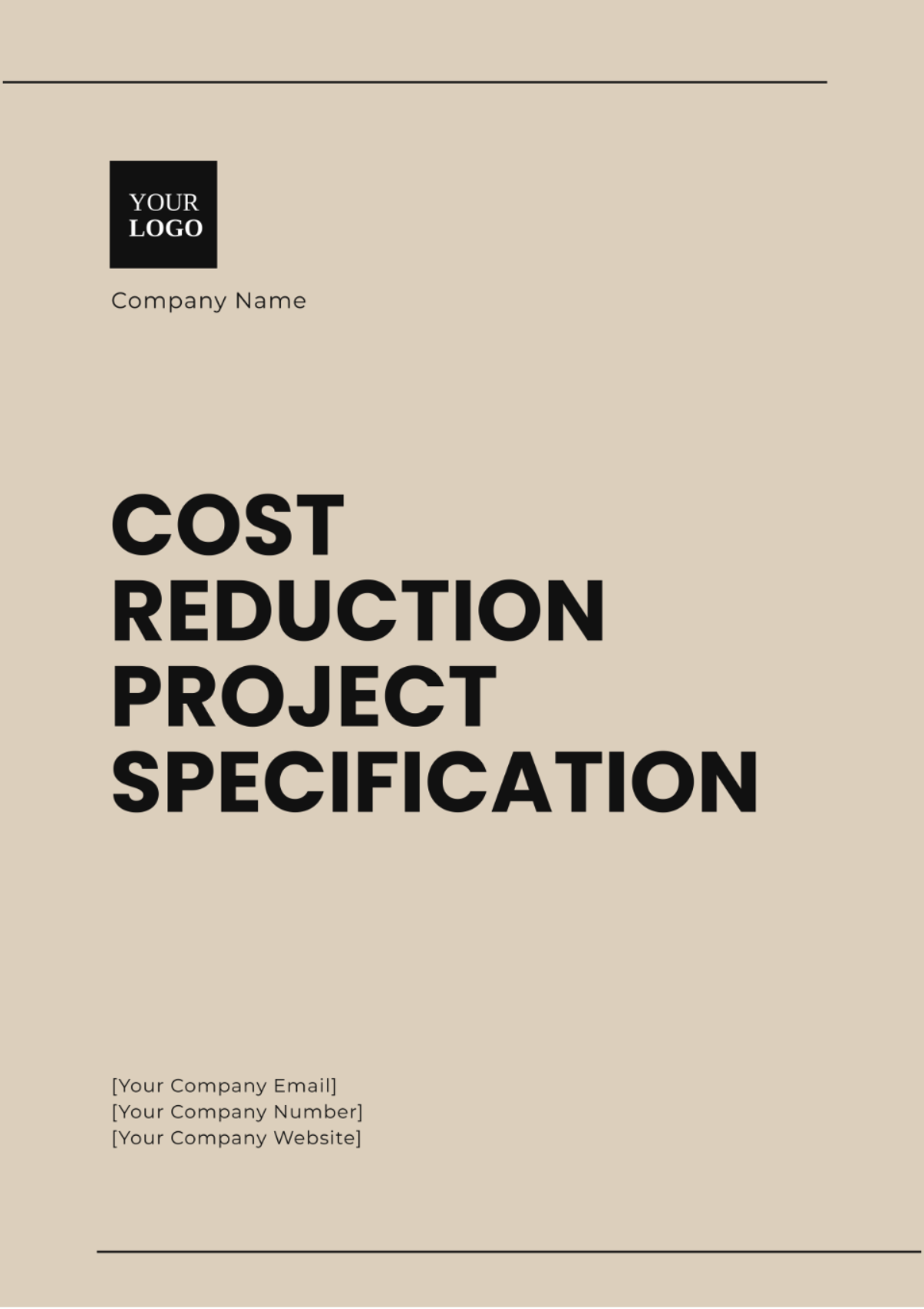Simple Business Specification Document
Prepared by: [YOUR NAME]
Email: [YOUR EMAIL]
This Simple Business Specification Document outlines the high-level objectives, scope, and requirements for the upcoming project aimed at enhancing internal operations. It serves as the foundation for aligning key stakeholders and guiding the project towards successful implementation.
I. Business Objectives
The primary goal of this project is to streamline the internal workflow processes and improve operational efficiency. This will be achieved by implementing a new software system that automates manual tasks, reducing errors and saving time. Key objectives include:
Automating invoice processing to reduce manual intervention.
Enhancing reporting capabilities to enable data-driven decision-making.
Improving user accessibility and reducing system downtime.
II. Scope
The scope of this project includes the design, development, and implementation of the new software solution, as well as training and user adoption. It will cover the following areas:
In Scope: Automation of invoicing, integration with current accounting systems, user training, and post-launch support.
Out of Scope: Redesign of the existing IT infrastructure, software development for mobile platforms, or any non-automated tasks.
III. Key Requirements
The project will focus on the following high-level business requirements:
The solution must integrate with existing enterprise resource planning (ERP) systems.
It should offer real-time data synchronization for better decision-making.
The user interface (UI) must be intuitive and require minimal training for staff.
The solution should be scalable to accommodate future growth in transactions.
IV. Stakeholders
The following key stakeholders are involved in this project:
Project Owner: [YOUR NAME]
Business Analysts: Responsible for gathering and validating requirements.
IT Team: Tasked with the technical implementation of the system.
End Users: Employees from the accounting and operations departments who will use the system.
V. Timeline
The project will follow the timeline outlined below:
Milestone | Start Date | End Date | Responsible Party |
|---|---|---|---|
Project Kickoff | January 15, 2050 | January 15, 2050 | [YOUR NAME] |
Requirements Gathering | January 16, 2050 | January 30, 2050 | Business Analysts |
System Design & Development | February 1, 2050 | April 15, 2050 | IT Team |
User Training | April 16, 2050 | April 30, 2050 | Training Department |
Final Implementation | May 1, 2050 | May 10, 2050 | IT Team |
VI. Use Cases
The main use cases for this project include:
Automated Invoice Processing: The software will handle invoice capture, approval, and posting into the accounting system without manual intervention.
Real-time Reporting: The system will generate up-to-the-minute reports on transaction volumes, helping business leaders make informed decisions.
User Training and Adoption: Comprehensive training programs will be rolled out to ensure all team members are proficient with the new software system.
VII. Risks and Mitigation
The following risks have been identified:
Risk 1: Resistance to new technology from employees.
Mitigation: Organize training sessions and provide support during the transition.
Risk 2: Integration issues with existing systems.
Mitigation: Thorough testing and staging before full deployment.
VIII. Conclusion
This Simple Business Specification Document establishes the high-level objectives and expectations for the new software system aimed at improving internal operations. By following this outline, the project will align with the strategic goals of the company, leading to enhanced efficiency and greater business agility. The next steps involve refining the requirements and initiating the design phase as outlined in the project timeline.
Prepared by: [YOUR NAME]
Email: [YOUR EMAIL]
